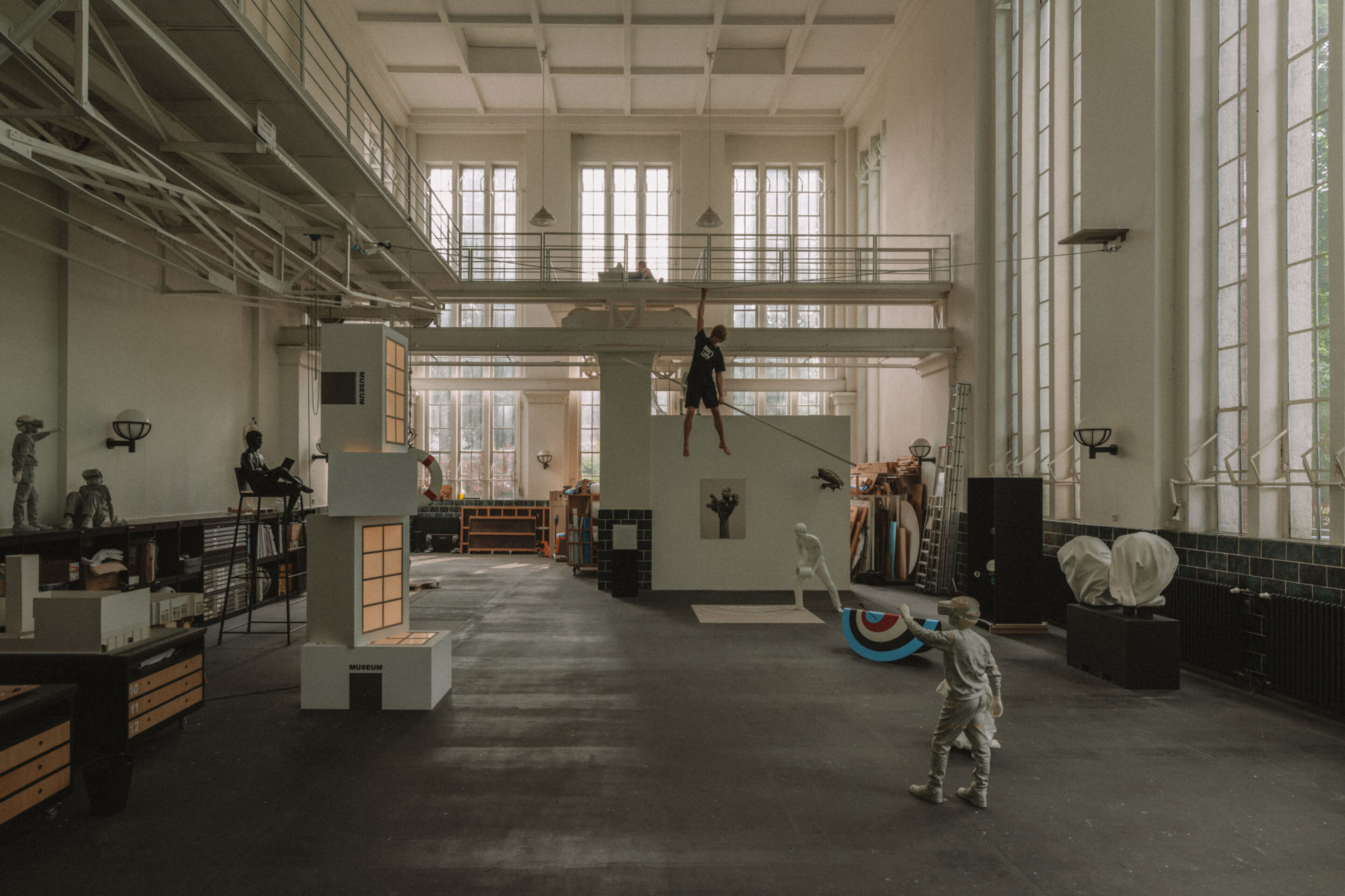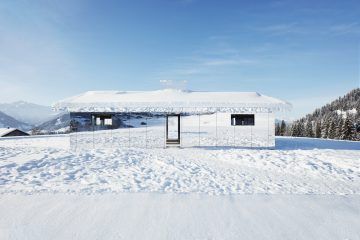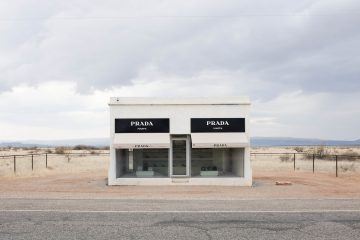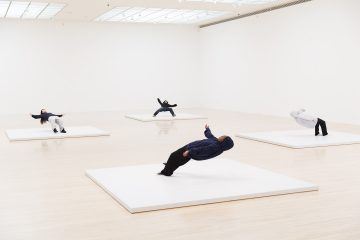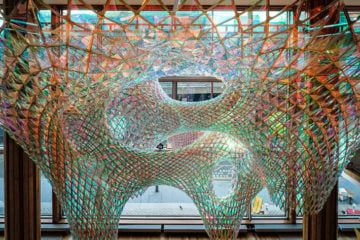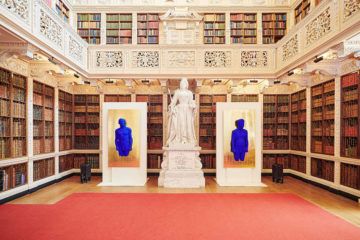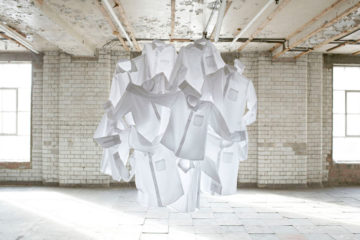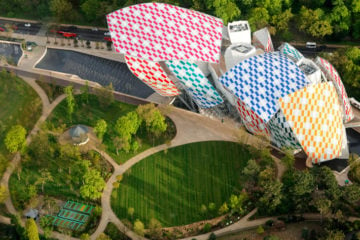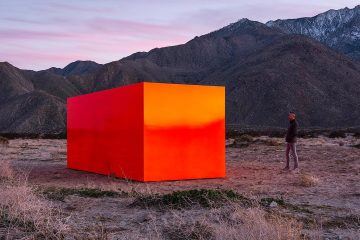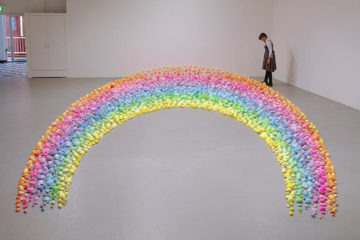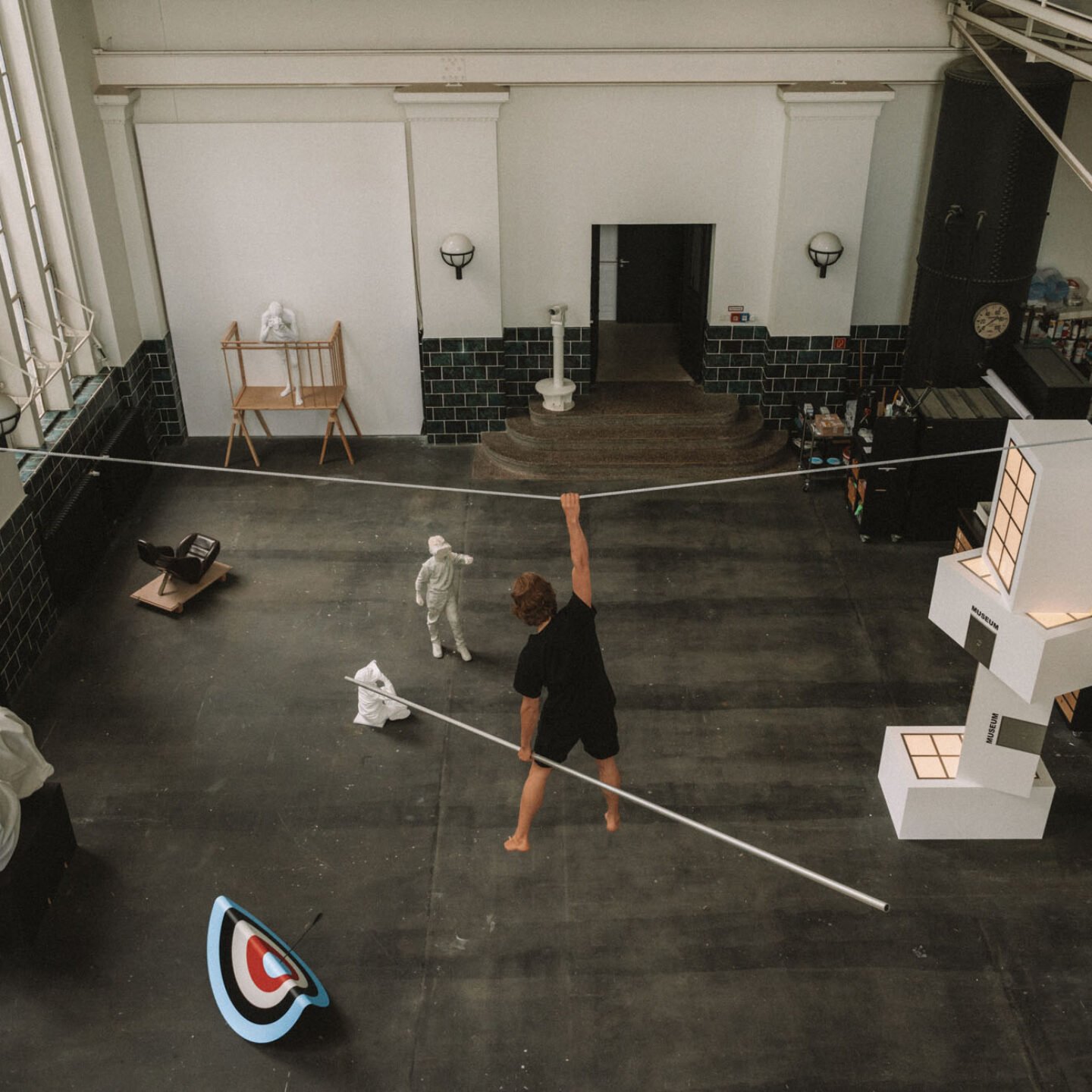
Elmgreen & Dragset: On Camouflaging Art Spaces
- Name
- Elmgreen & Dragset
- Images
- Clemens Poloczek
- Words
- Marie-Louise Schmidlin
When Michael Elmgreen and Ingar Dragset first entered the art world in the early 1990s, they were met with numerous conventions and behavioral codes that they perceived as “a little bit disappointing.” A realization that marked the beginning of the duo’s subversive journey through the art world, transforming museums and galleries around the globe into unexpected and slightly unsettling environments. During the early days of summer, the two artists welcomed Ignant into their studio and talked about how they converted spaces to challenge the status quo.
Elmgreen & Dragset’s atelier is on a quiet side street in the heart of the Berlin-Neukölln neighborhood. “We moved here in 2006 when Neukölln was not as popular as it is now. Our friends told us we were crazy to do that, but when we saw the place, we knew we had to get it,” Michael Elmgreen tells us as we step into the space.
The studio is housed within the walls of a former 1924 water pumping station. While some building features have been preserved, such as the slim floor-to-ceiling windows or the bluish tiles that frame the studio’s main hall, other parts have been adapted to meet the artists’ needs. The office area, for instance, sits on a balcony-like platform overlooking the studio and can be moved from side to side. In the back of the main space, workshops offer room for creating small sculptures and prototypes. The building’s attic has been converted into a sleek loft apartment, occasionally hosting gatherings.
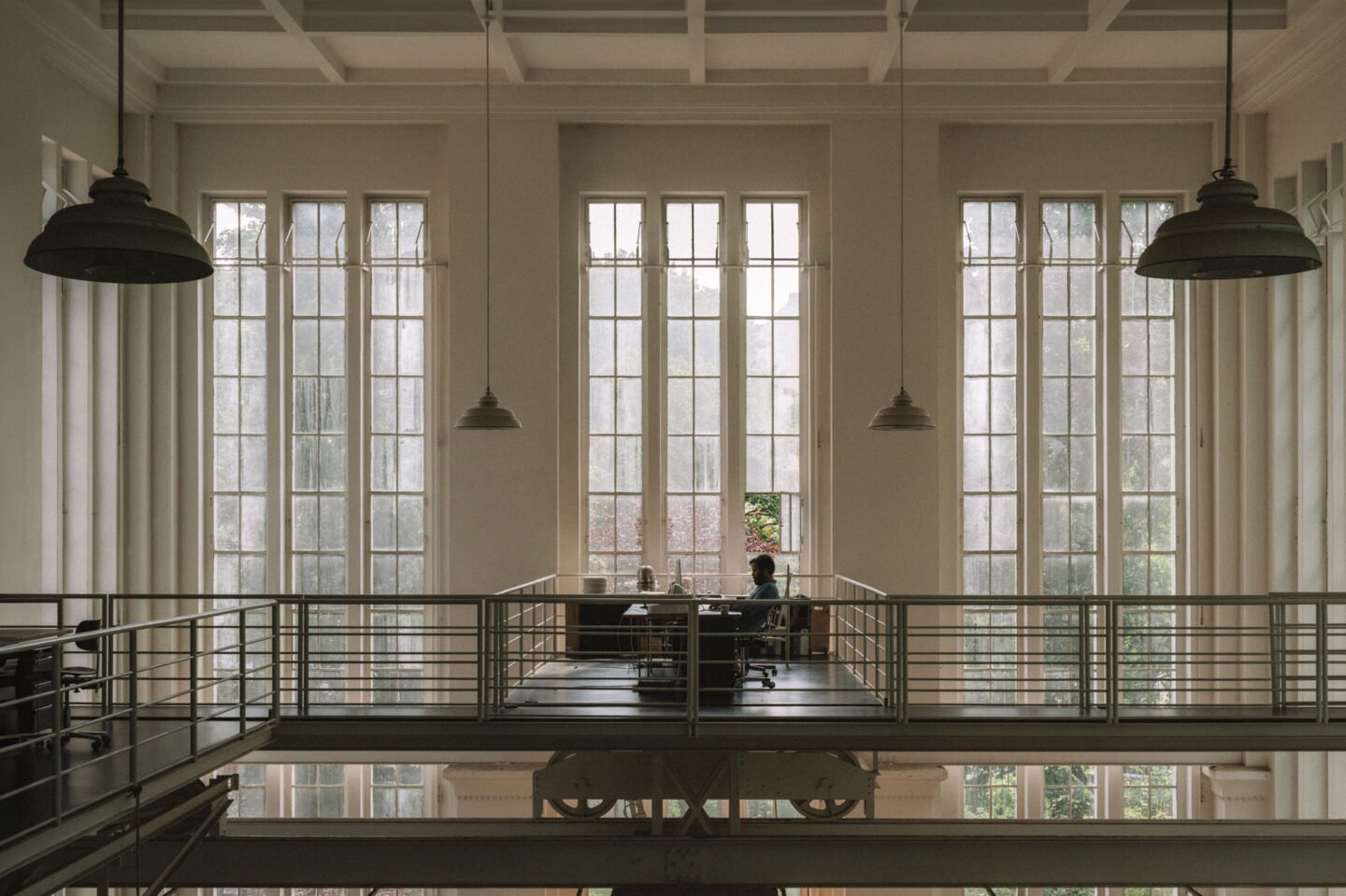
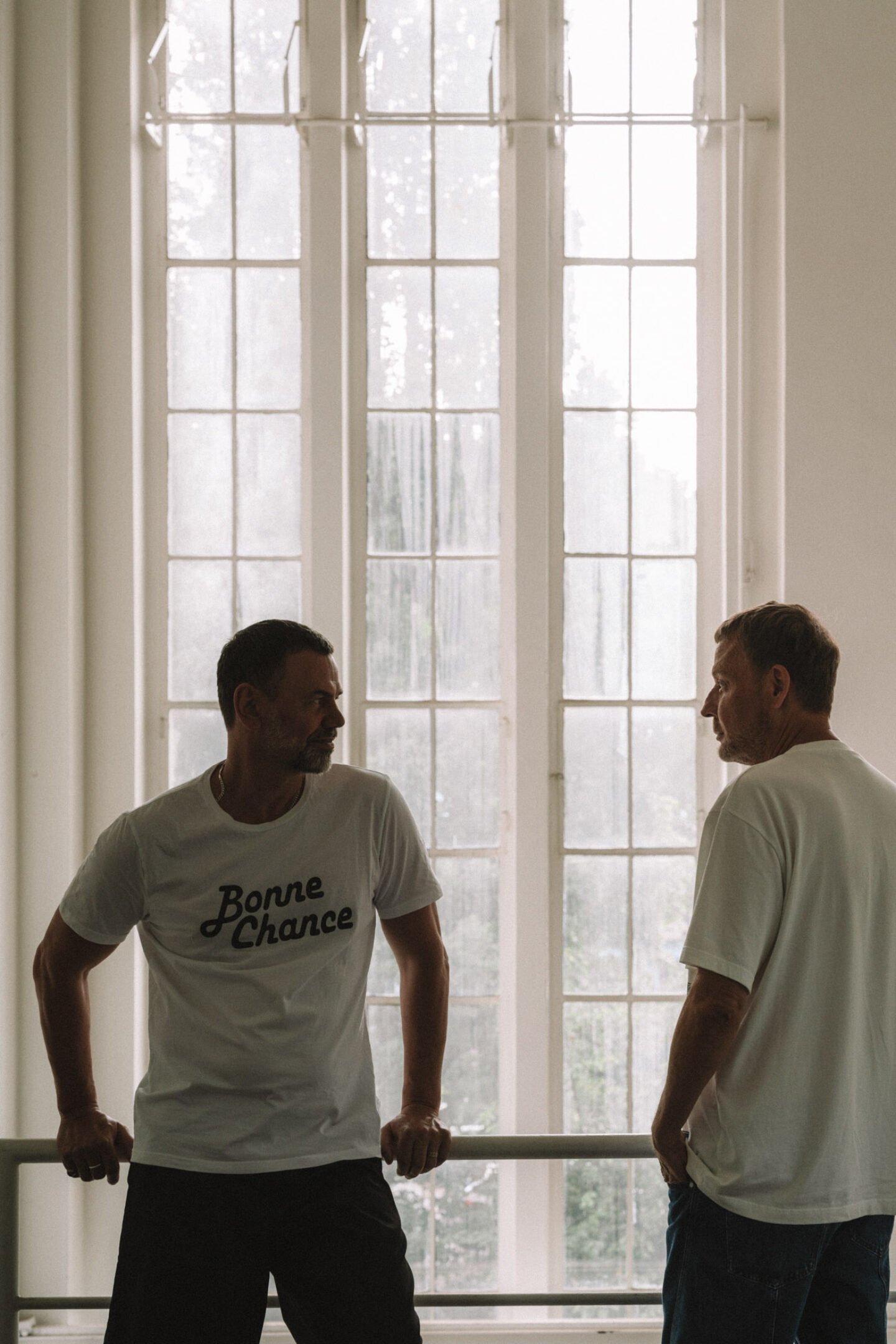
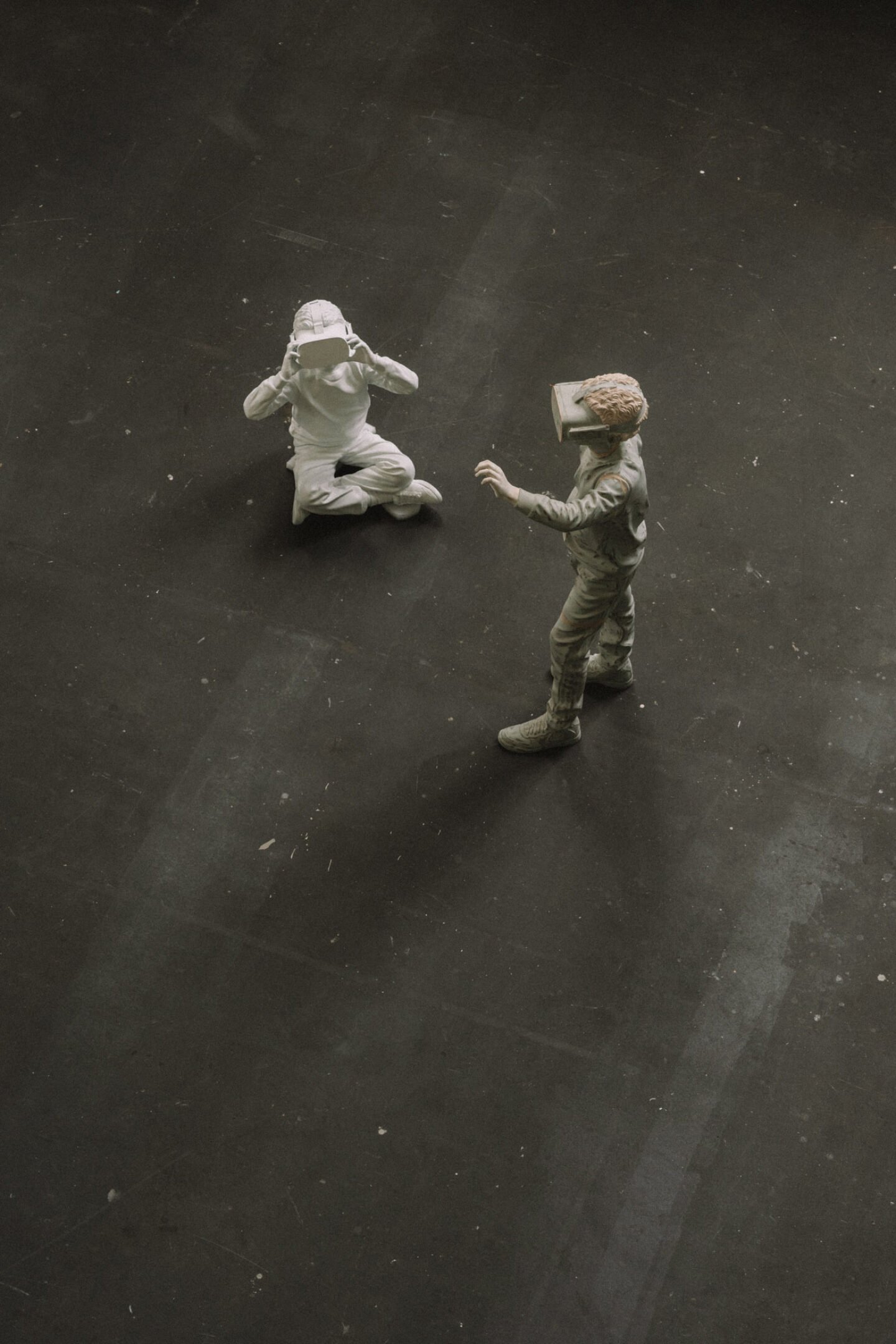
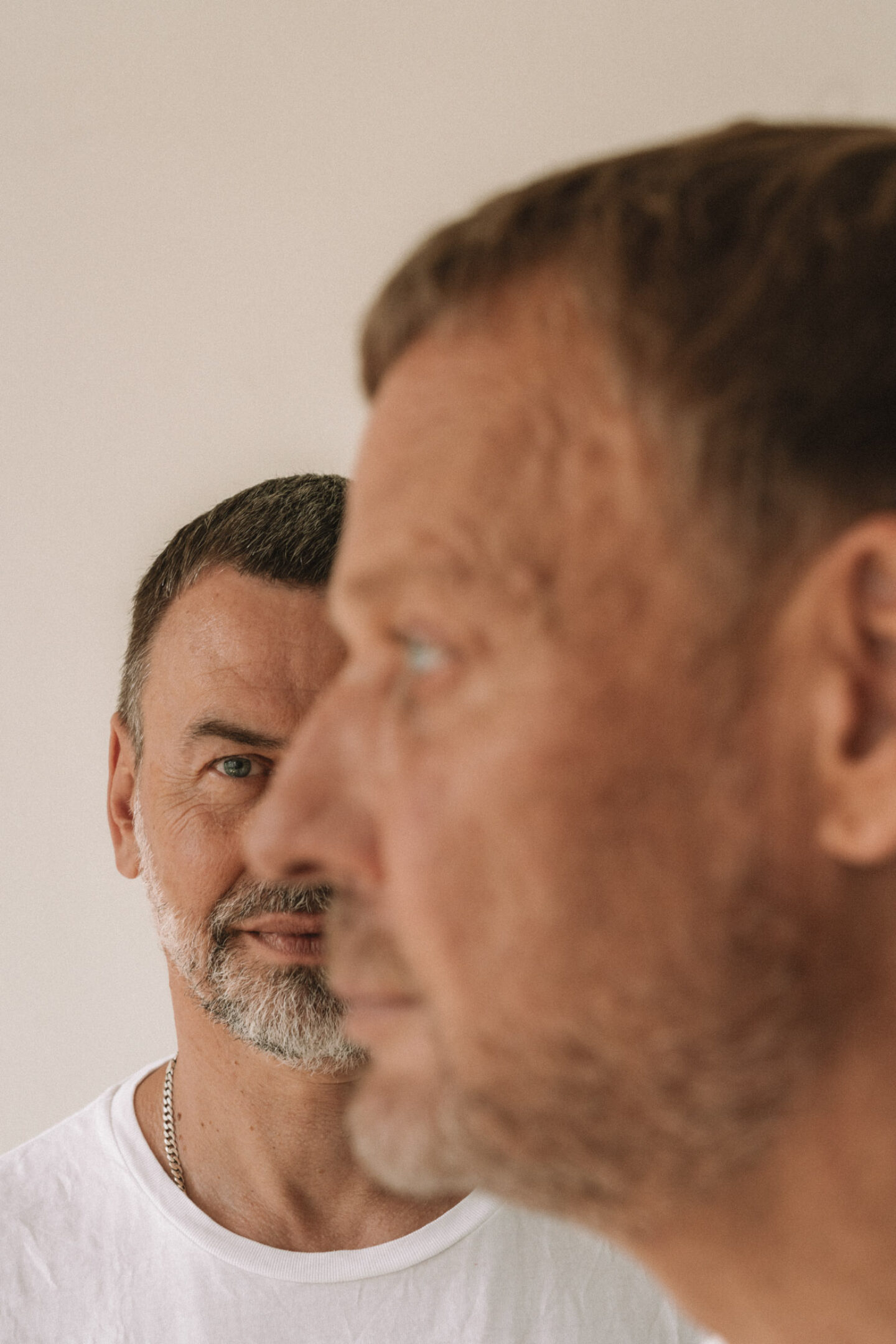
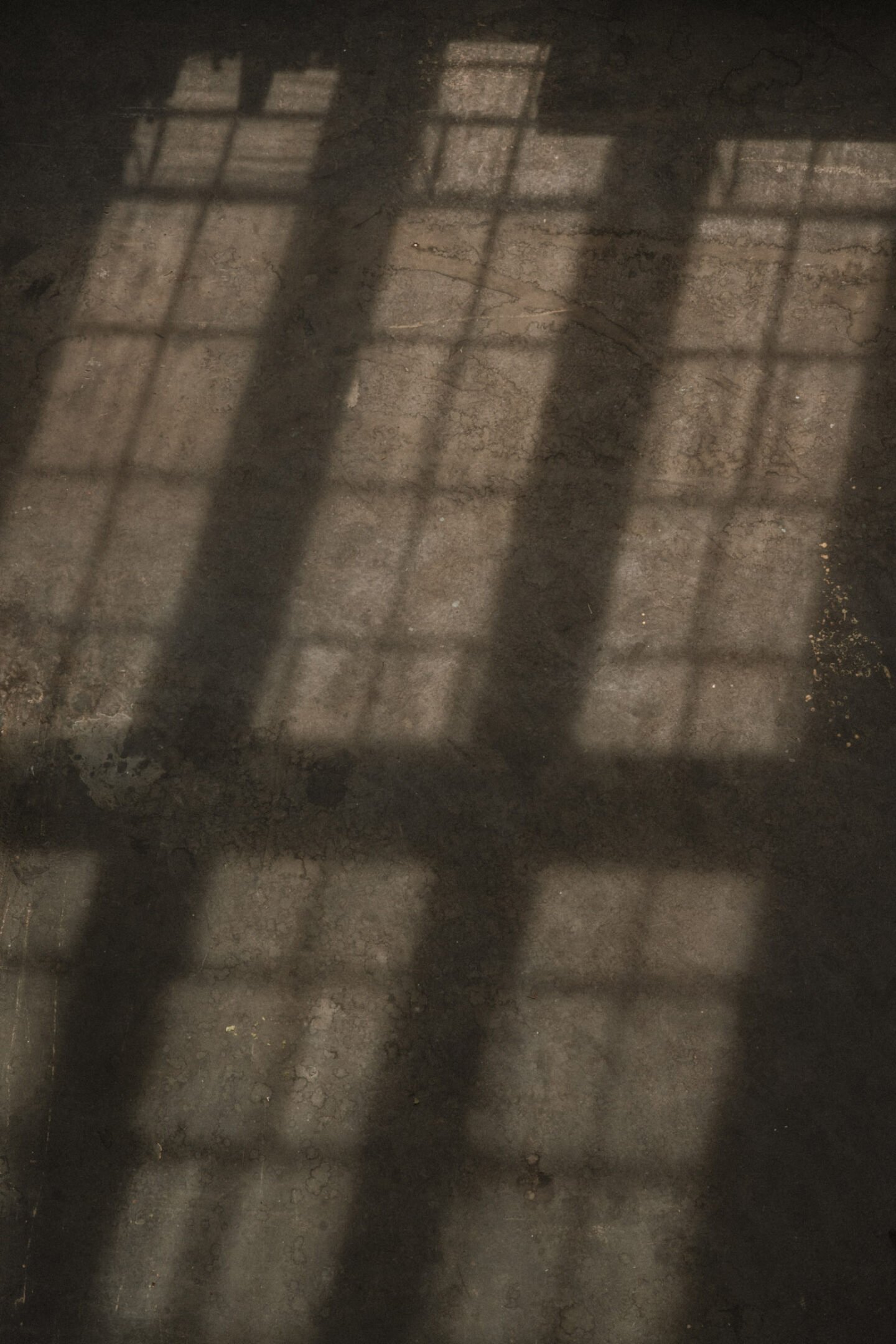
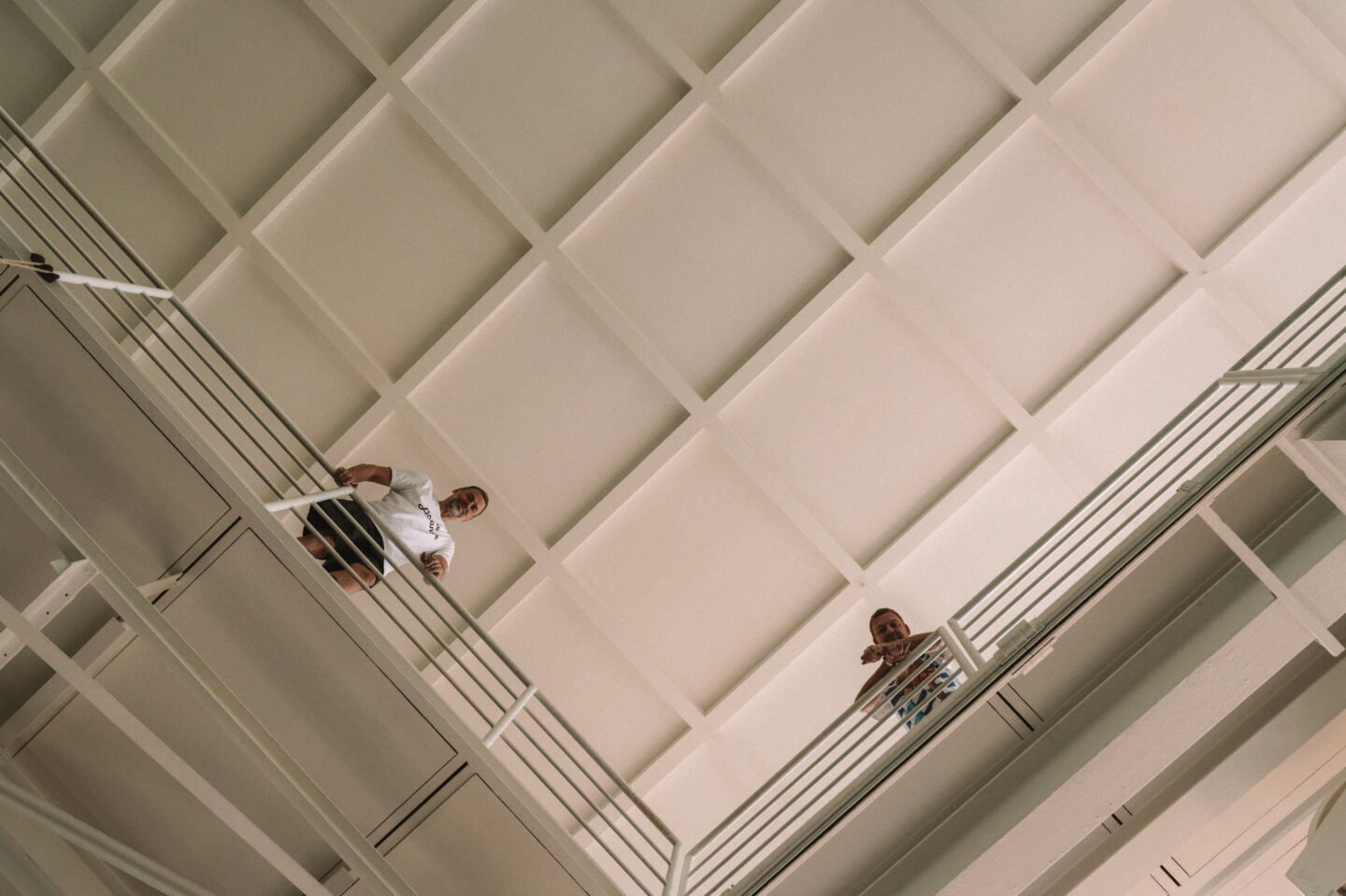
Elmgreen & Dragset have been shaking up the art world for almost thirty years with their thought-provoking installations and sculptures, frequently exploring themes such as power dynamics, social structures, identity, and homosexuality. “When we first met, Michael was writing poetry, and I came from the theater world. Suddenly we found ourselves in the gallery and museum context, and we realized that this world, which seemed so free from the outside, was full of conventions and rules. It was also quite snobbish at times. So many of our earlier works were performances in which we would criticize the white cube and institutional art spaces,” Ingar Dragset tells us about their beginnings. “We soon realized, though, that those rules and norms wouldn’t change just because we criticized them. So we thought of a way to present our sculptural work in different settings. That is how we started camouflaging those art spaces. It was like the white cube was suddenly dressing up in drag,” Michael Elmgreen adds.
"In the places, we create, it’s not so much about whether viewers see art or if it’s ‘good’ art. It’s more about what story the room tells, what it actually says."
The transformation of spaces is as essential to the practice of the Scandinavian duo as the objects they put in them. Elmgreen & Dragset use their own sculptures, as well as found things, ready-made objects, and the works of other artists in their temporary installations to create a multi-layered narrative. Yet, despite being meticulously planned and produced, the environments often appear to be dysfunctional. A fake art fair where nothing is available, empty swimming pools, the house of a dead art collector, an abandoned office, or a forever-closed Prada boutique in the middle of the desert—something always seems to be a little bit off, making the audience feel slightly uncomfortable, like an uninvited guest. “In the places, we create, it’s not so much about whether viewers see art or if it’s ‘good’ art. It’s more about what story the room tells, what it actually says,” Dragset tells us. “The visitors are invited to explore the spaces as if they were detectives,” he continues.
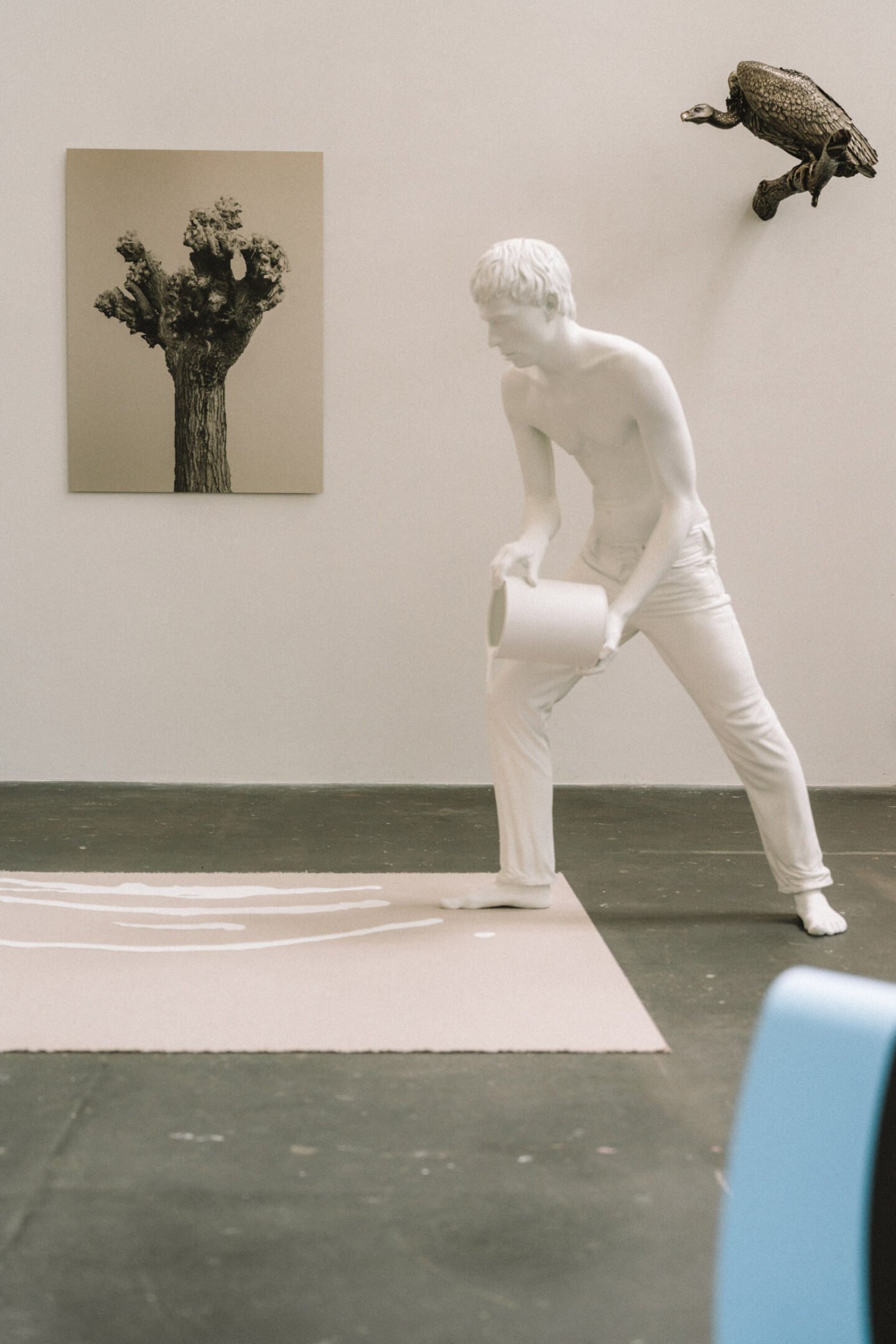
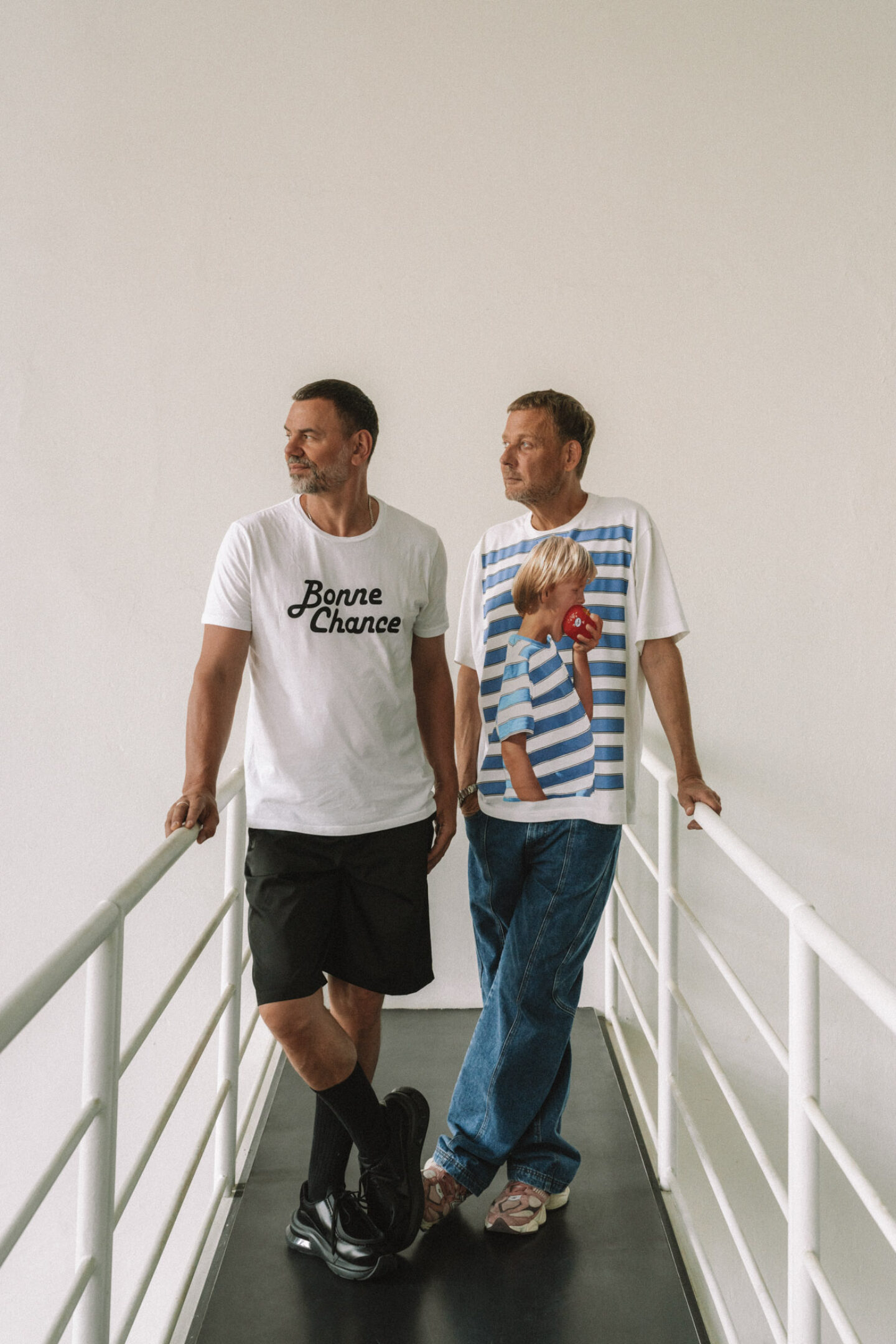
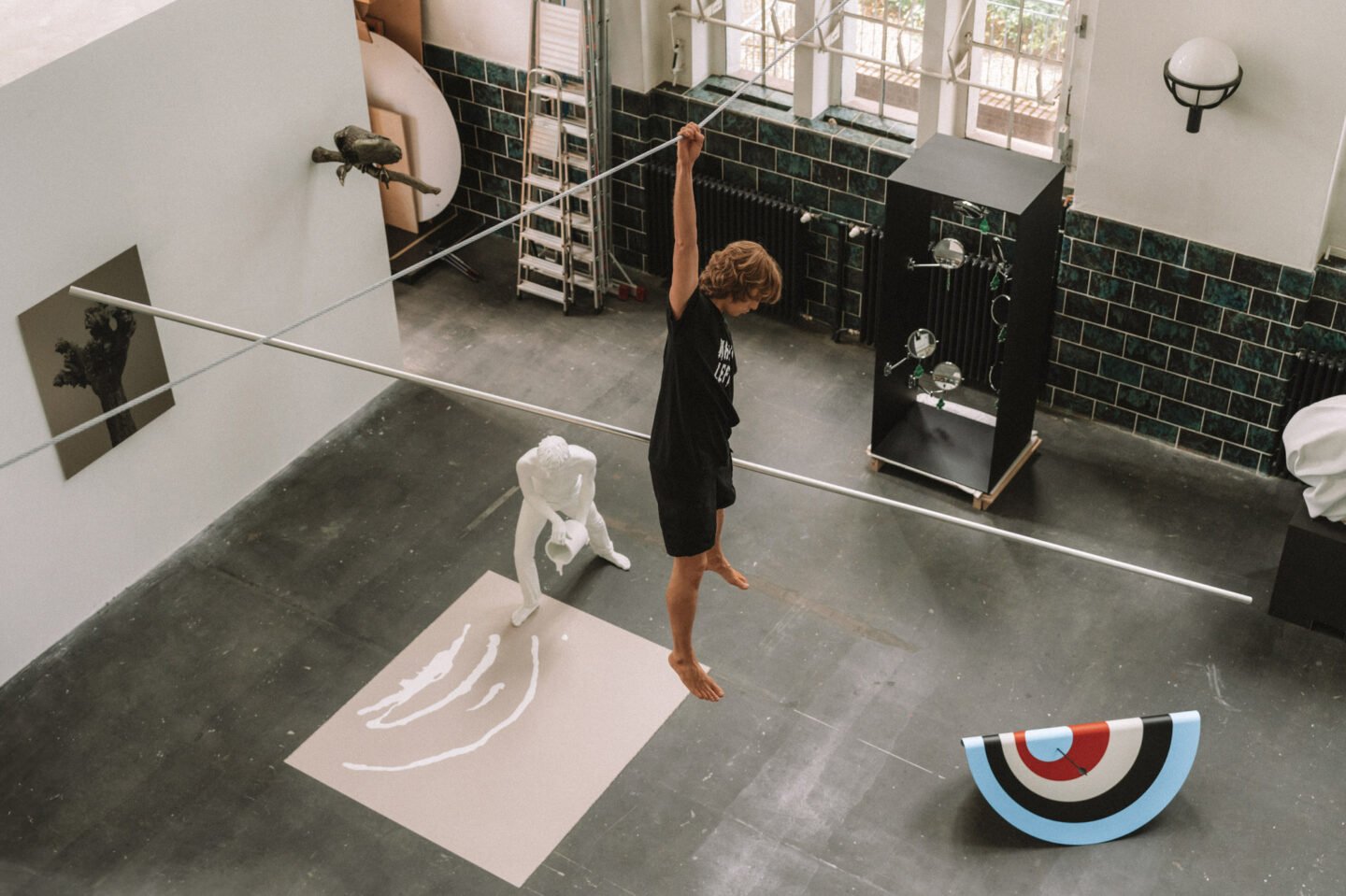
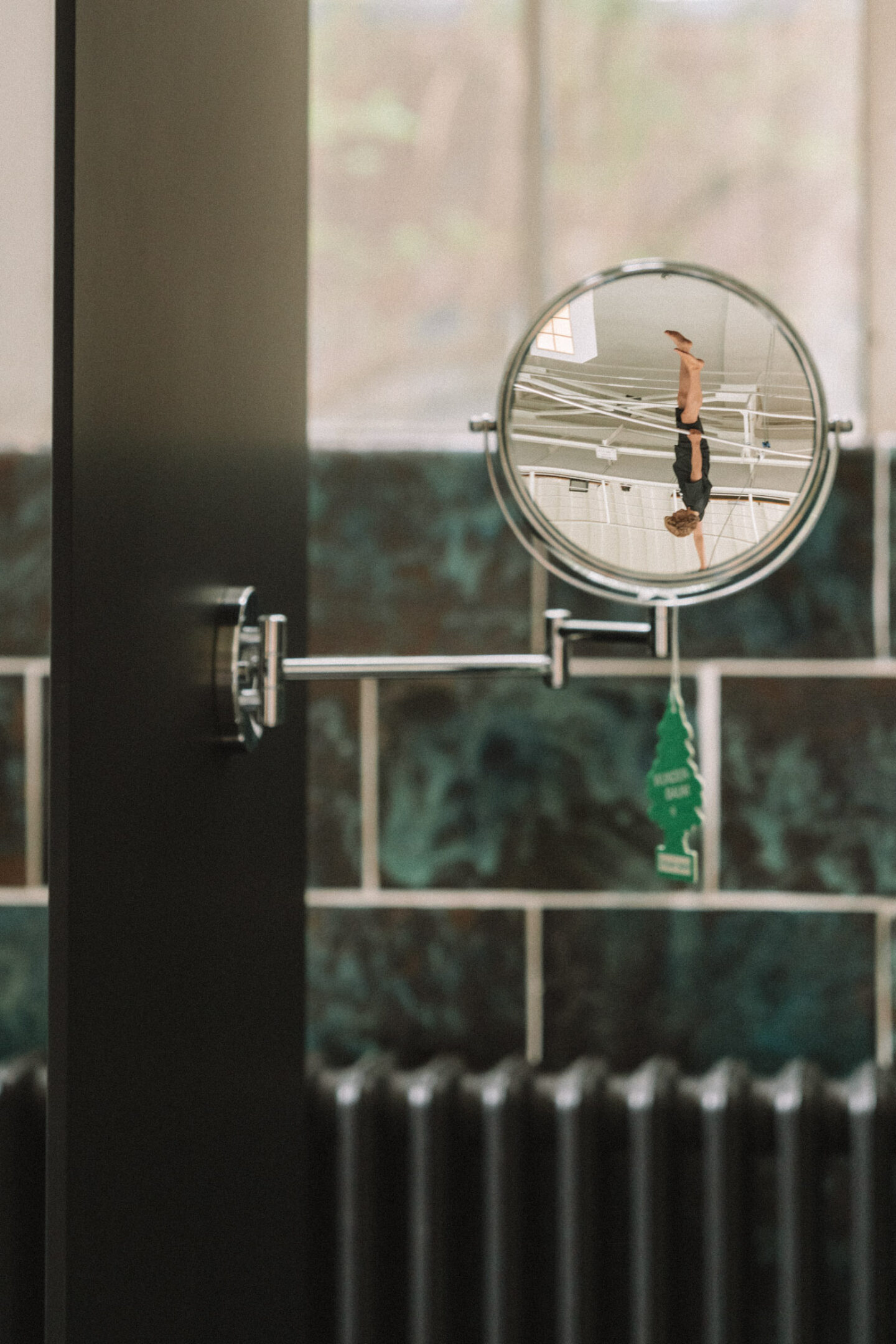
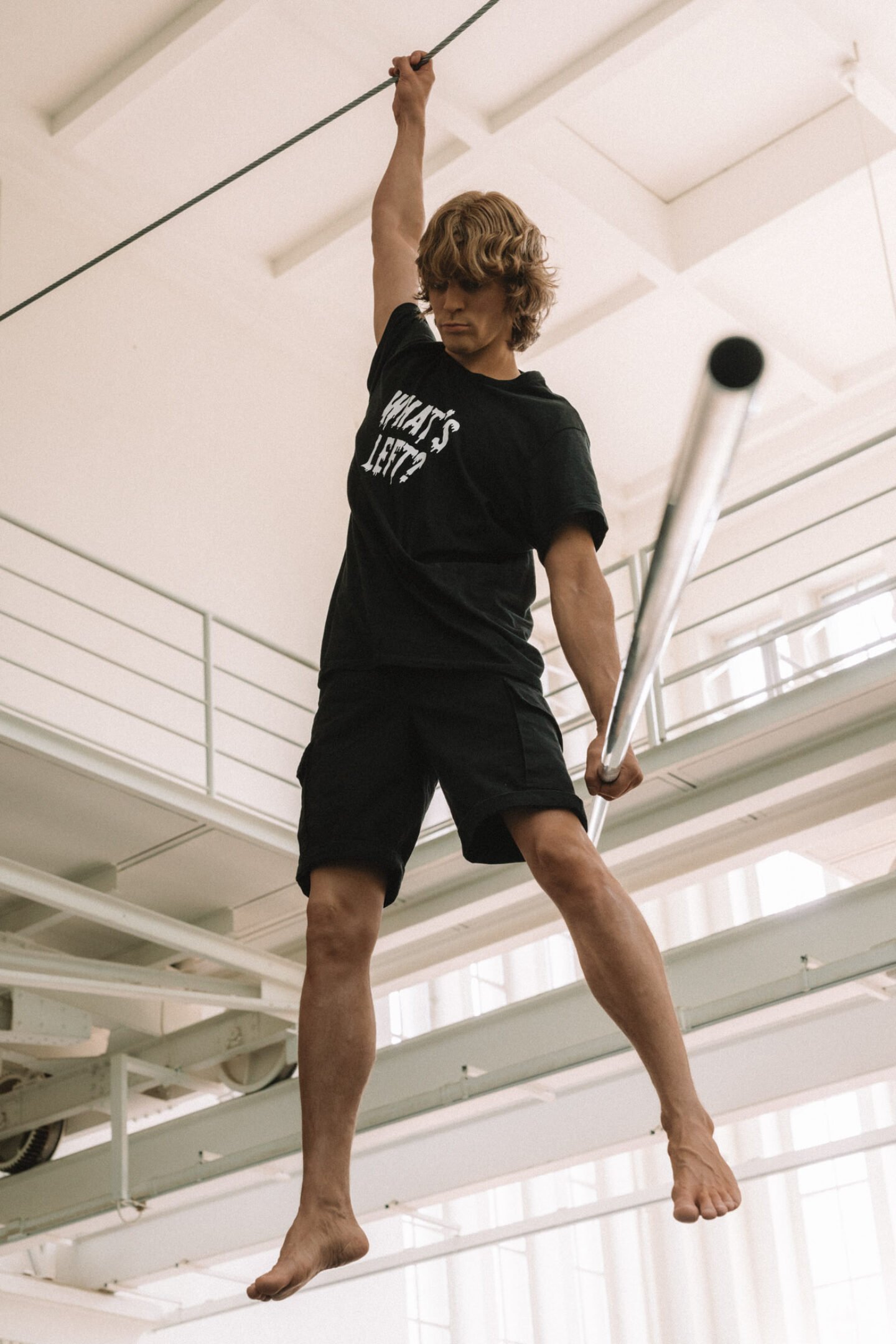
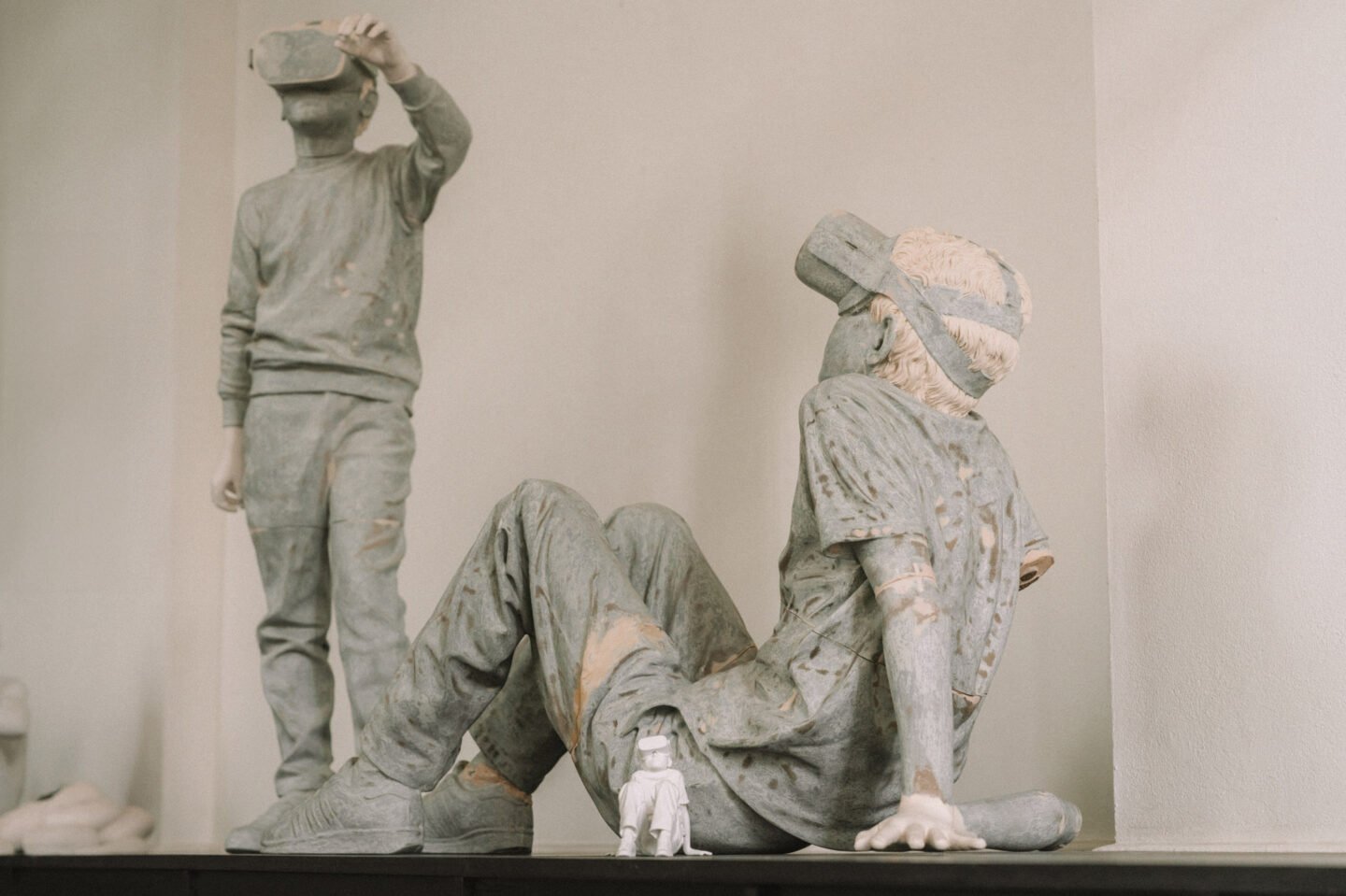
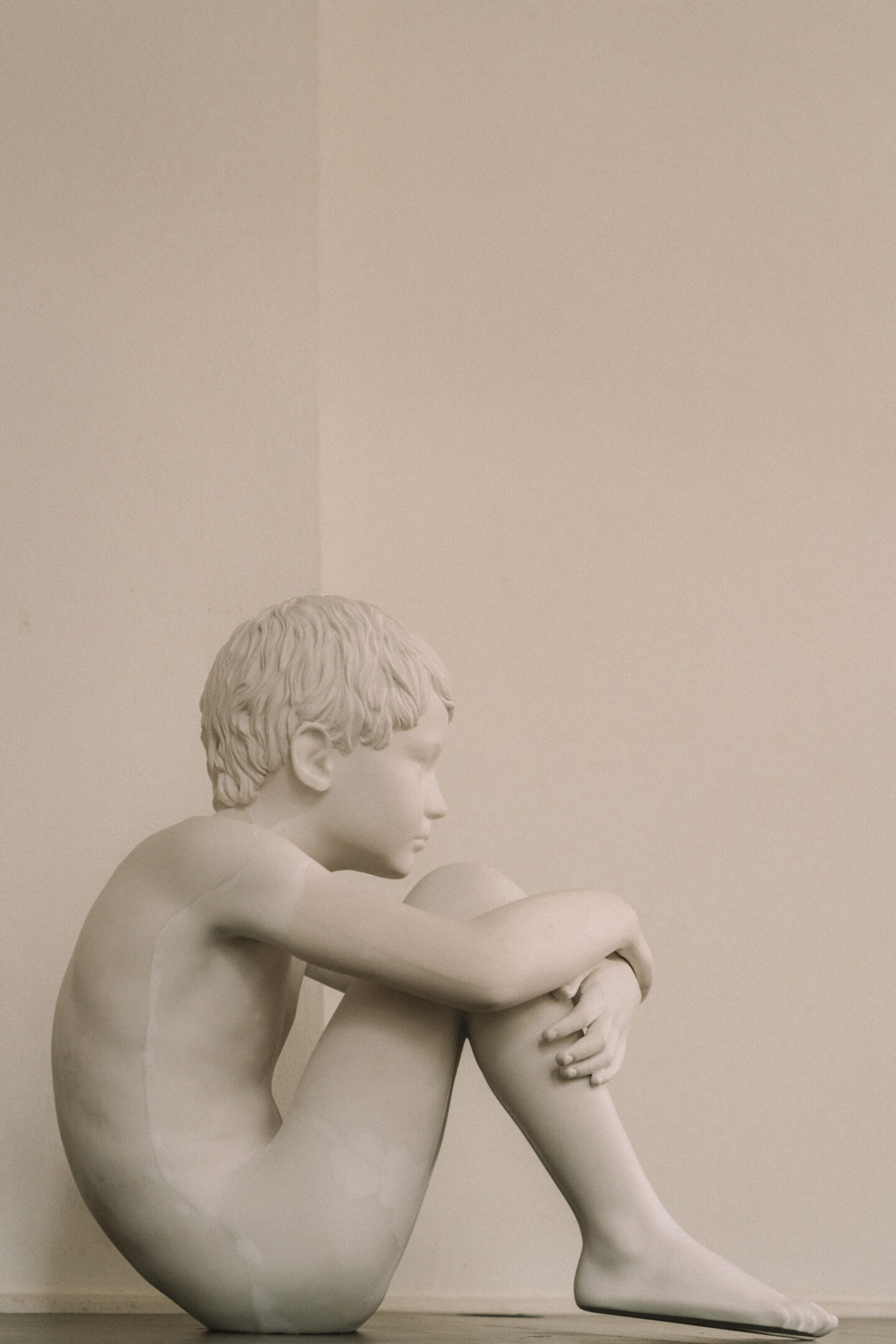
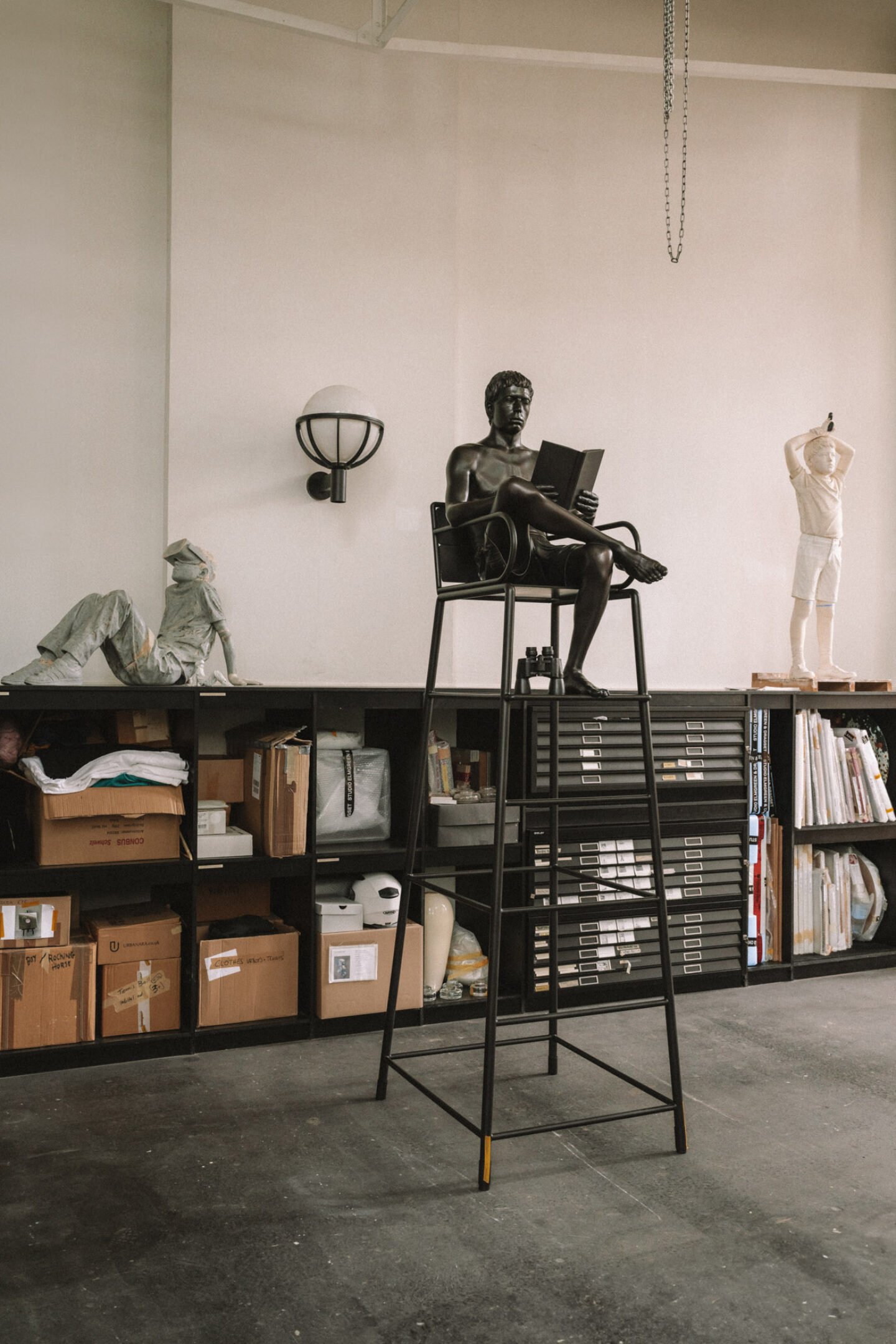
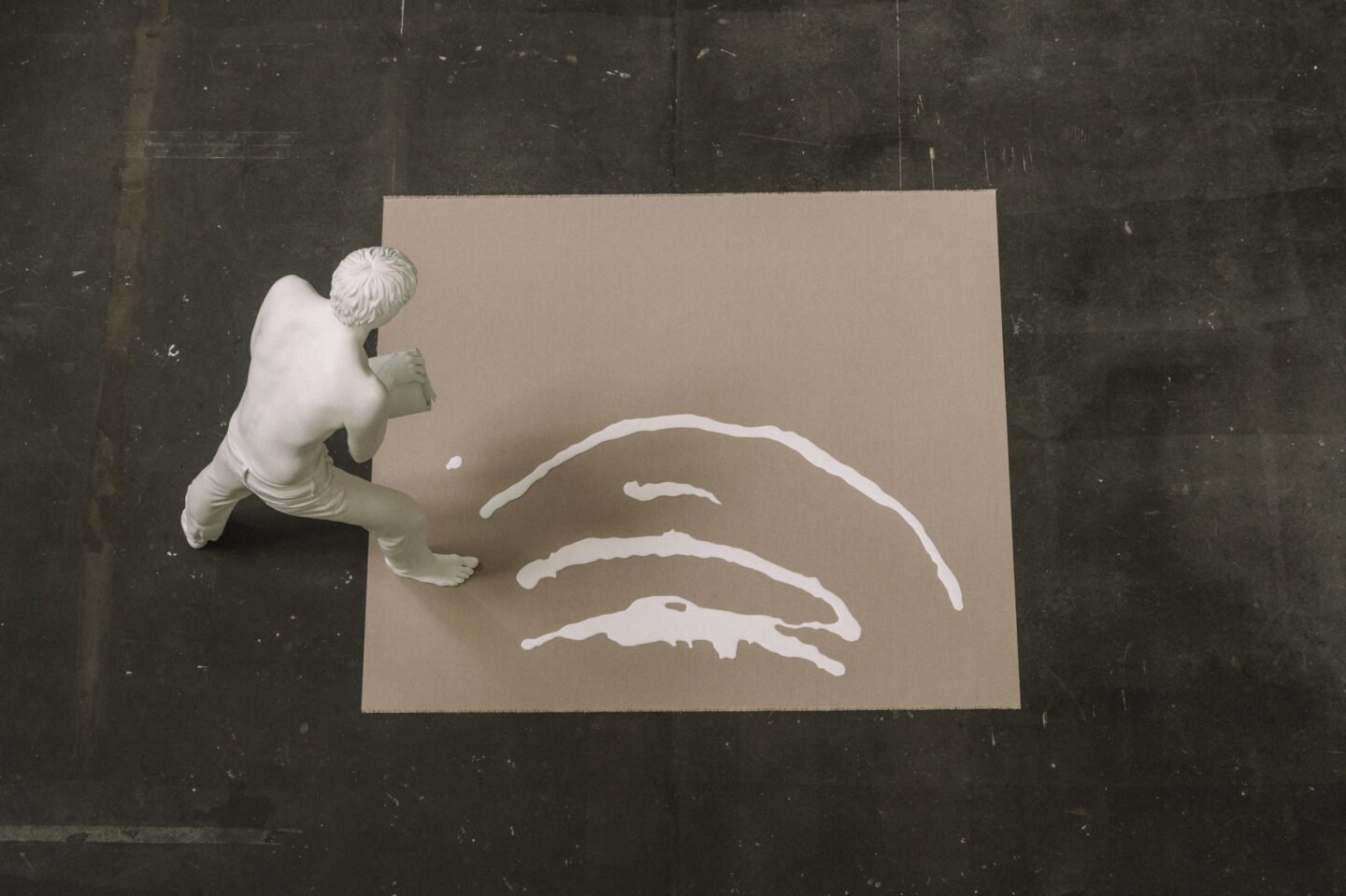
Their current exhibition, “Bonne Chance,” at the Centre Pompidou-Metz, which will be on view until April 2024, explores life as a game-like scenario, where different stages affect our reactions and behaviors. Daily environments are organized in such a way that logic no longer applies. The audience—the players—must navigate the space like a labyrinth, never quite knowing what the next turn might bring. In one moment, they find themselves in a public restroom. A second later, they will be in a laboratory, a CCTV surveillance room, or a morgue. While the exhibition setup evokes the uncertainty of a game, this round, however, cannot be won. Rather than trying to leave the show as a winner, or loser, the artists invite the visitors to question the game’s structure and redefine the rules by which they are playing.
One of the characters that form part of the show in Metz is also prominently displayed in the artist’s studio. It is the life-like sculpture of a slipped tightrope walker who, with one hand, clings onto a wire stretched across the room. On his T-shirt, the question “What’s left?”, which is also the work’s title, reflects on the young man’s future but also success, failure, and the immediate outcome of the scenario.
Not far from the unlucky acrobat, a black bronze sculpture shows a young man, a lifeguard, sitting on his high-rise chair. Absorbed in a book, he seems to be forgetting about his environment and his task to keep a watchful eye. Adjacent to him, we notice a sculpture of a vulture perching on a dead tree, critically overlooking the space. Across the room, an object resembling two persons kissing while their faces are covered with a white cloth is a nod to René Magritte’s painting “The Lovers.”
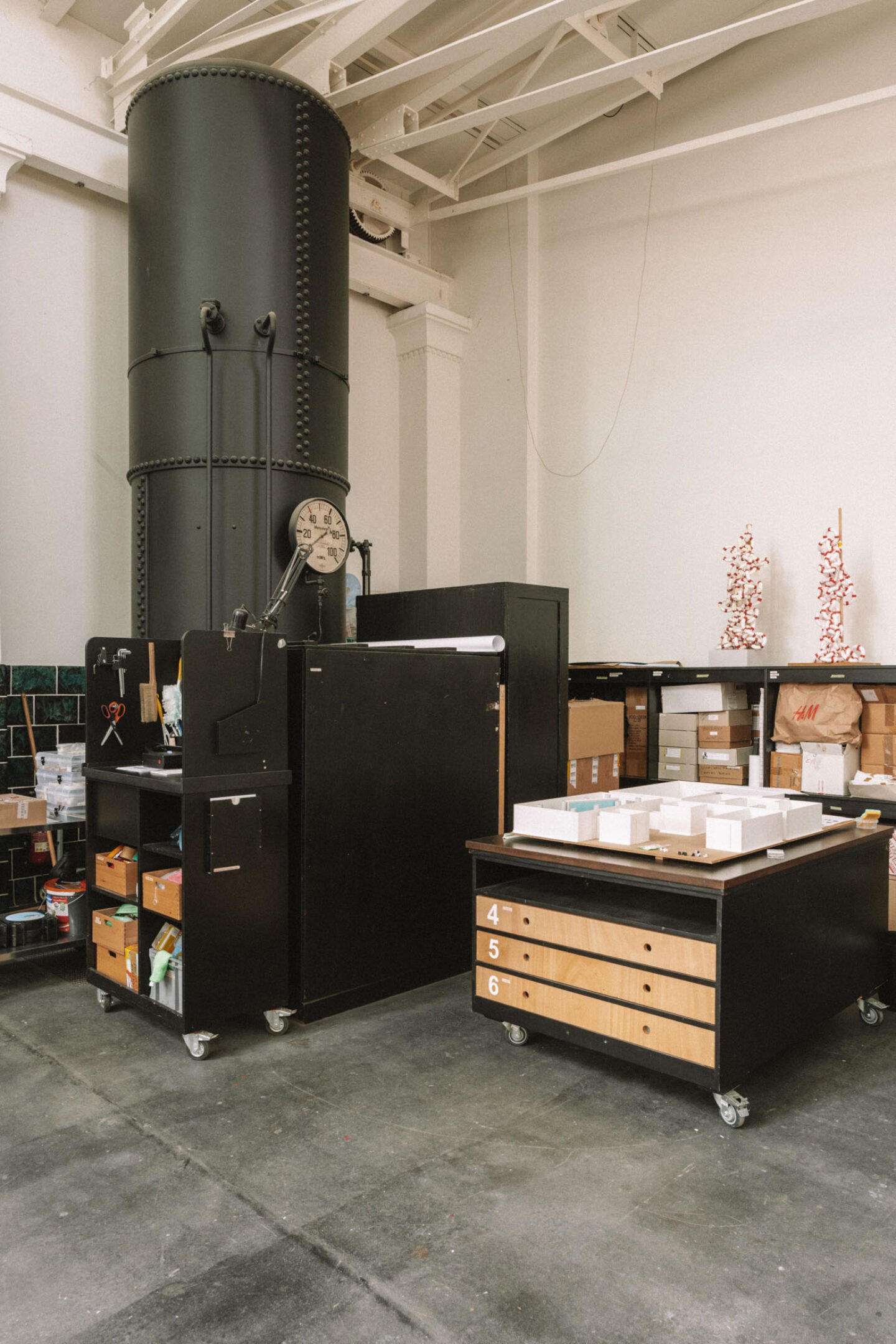
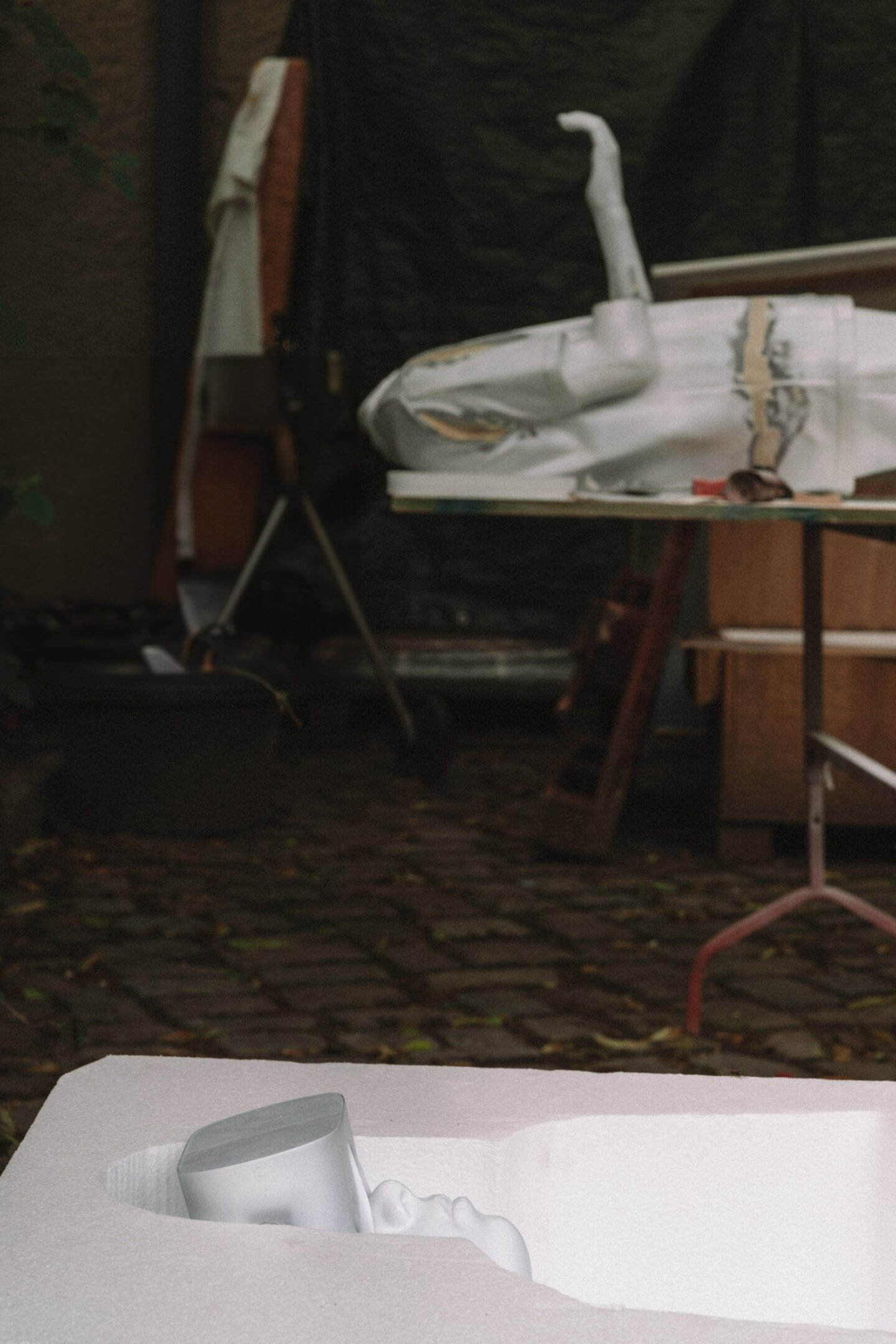
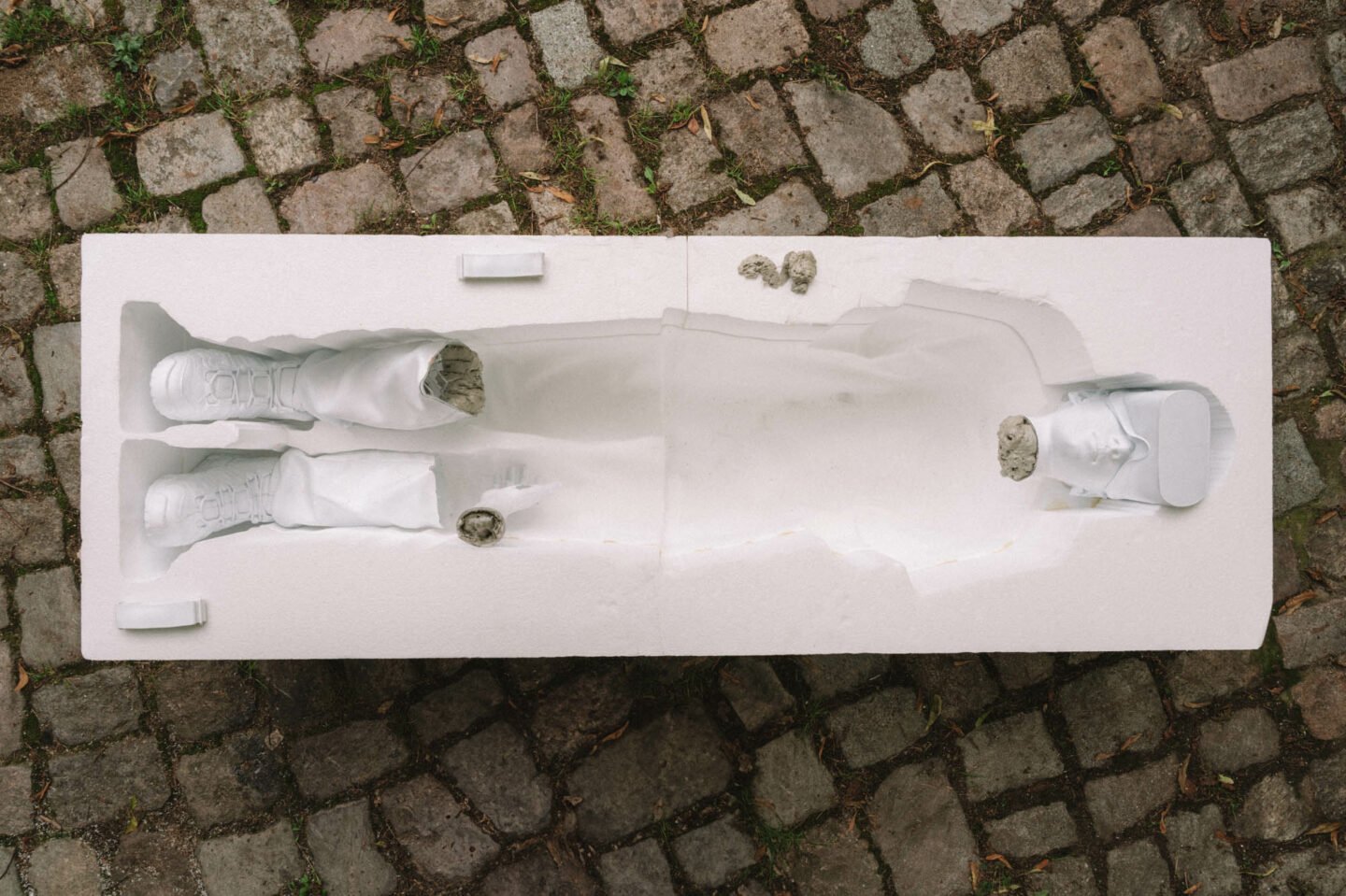
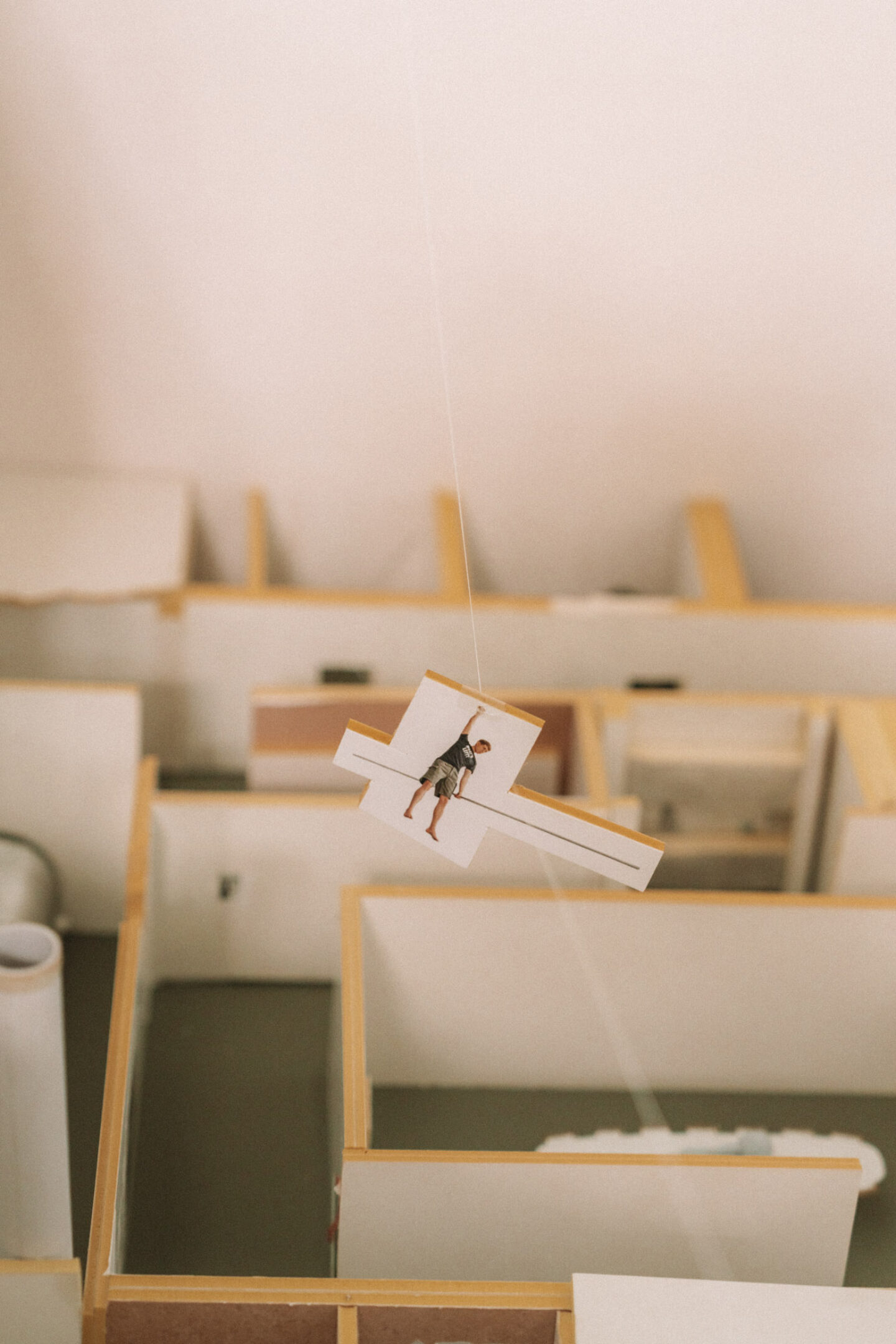
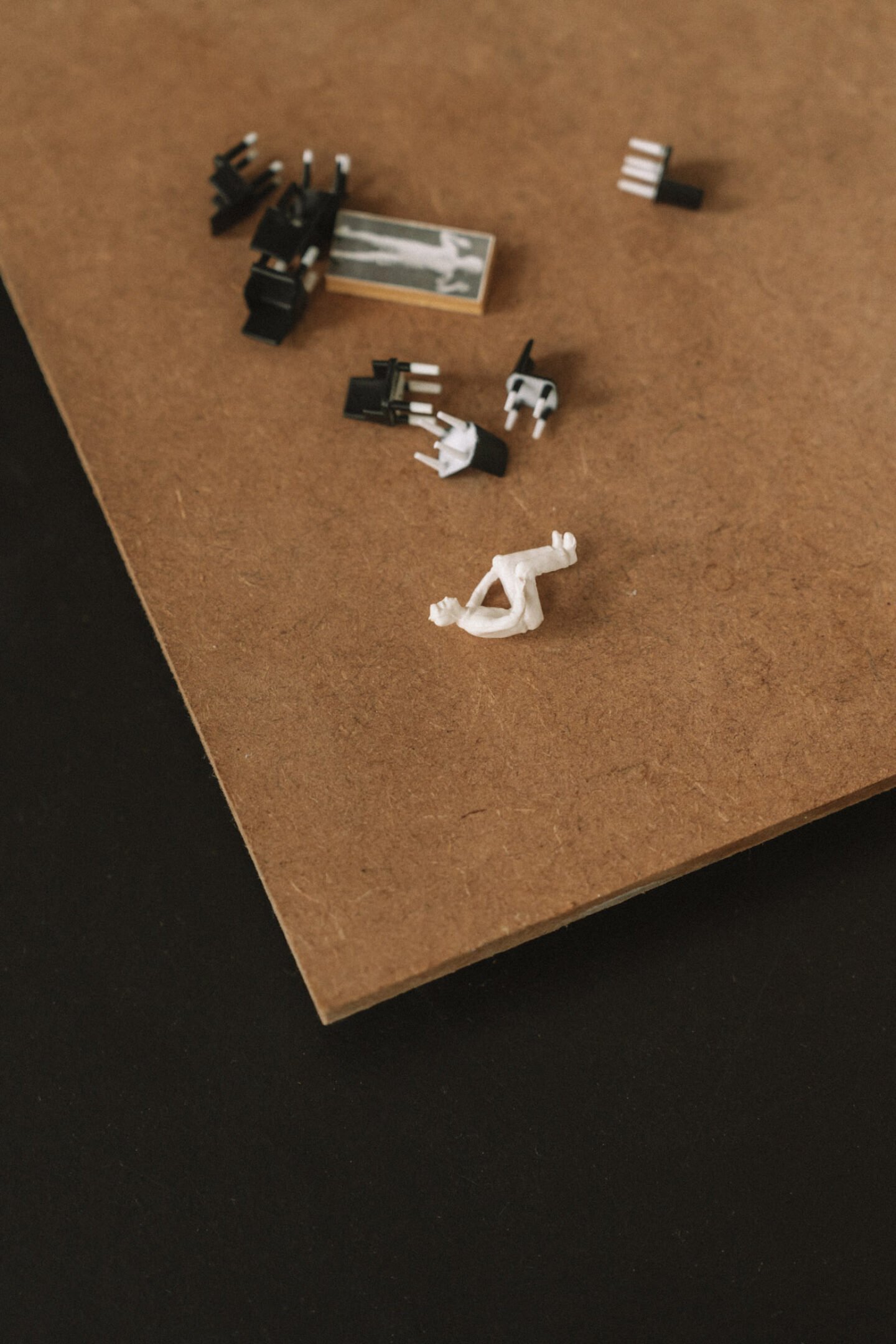
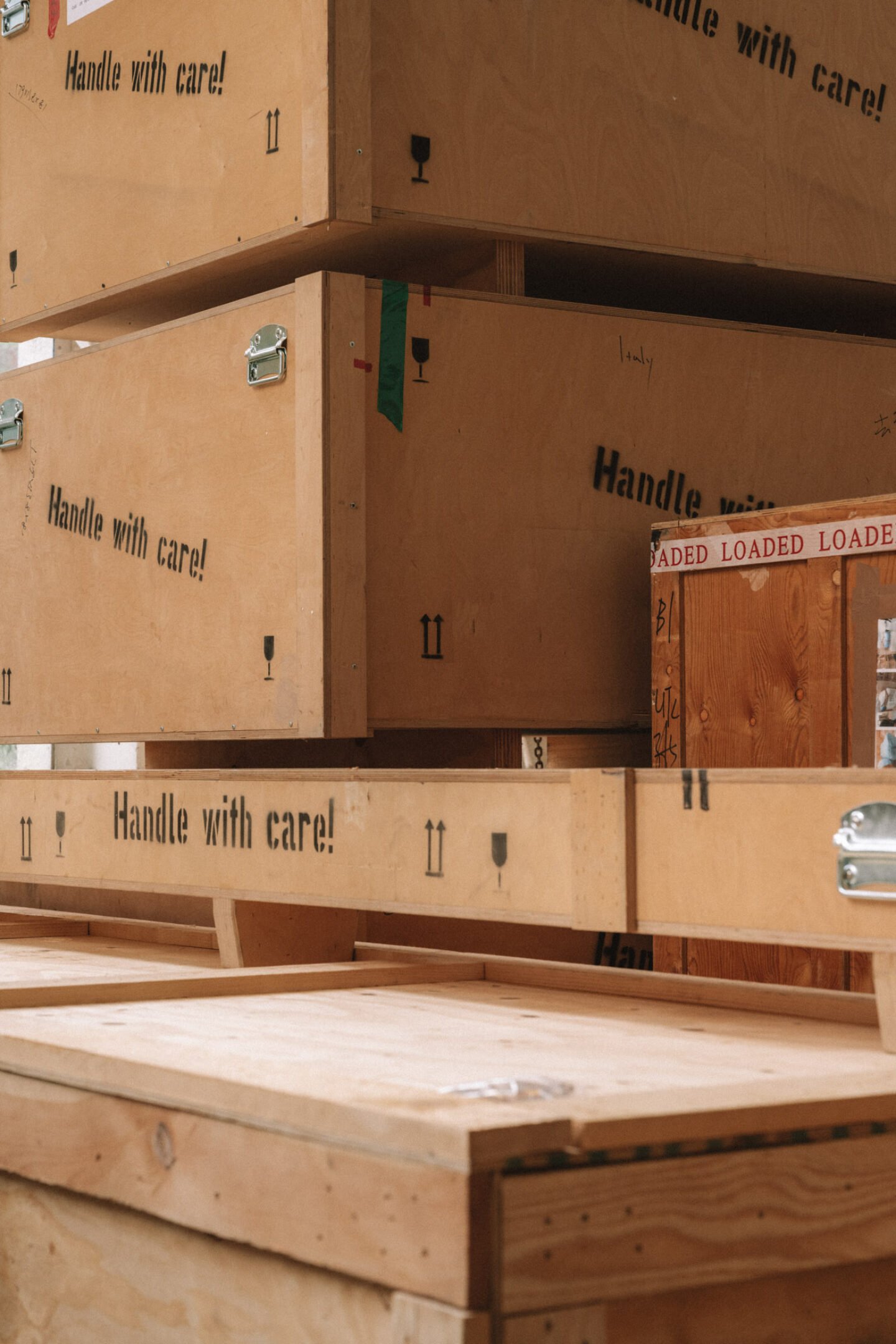
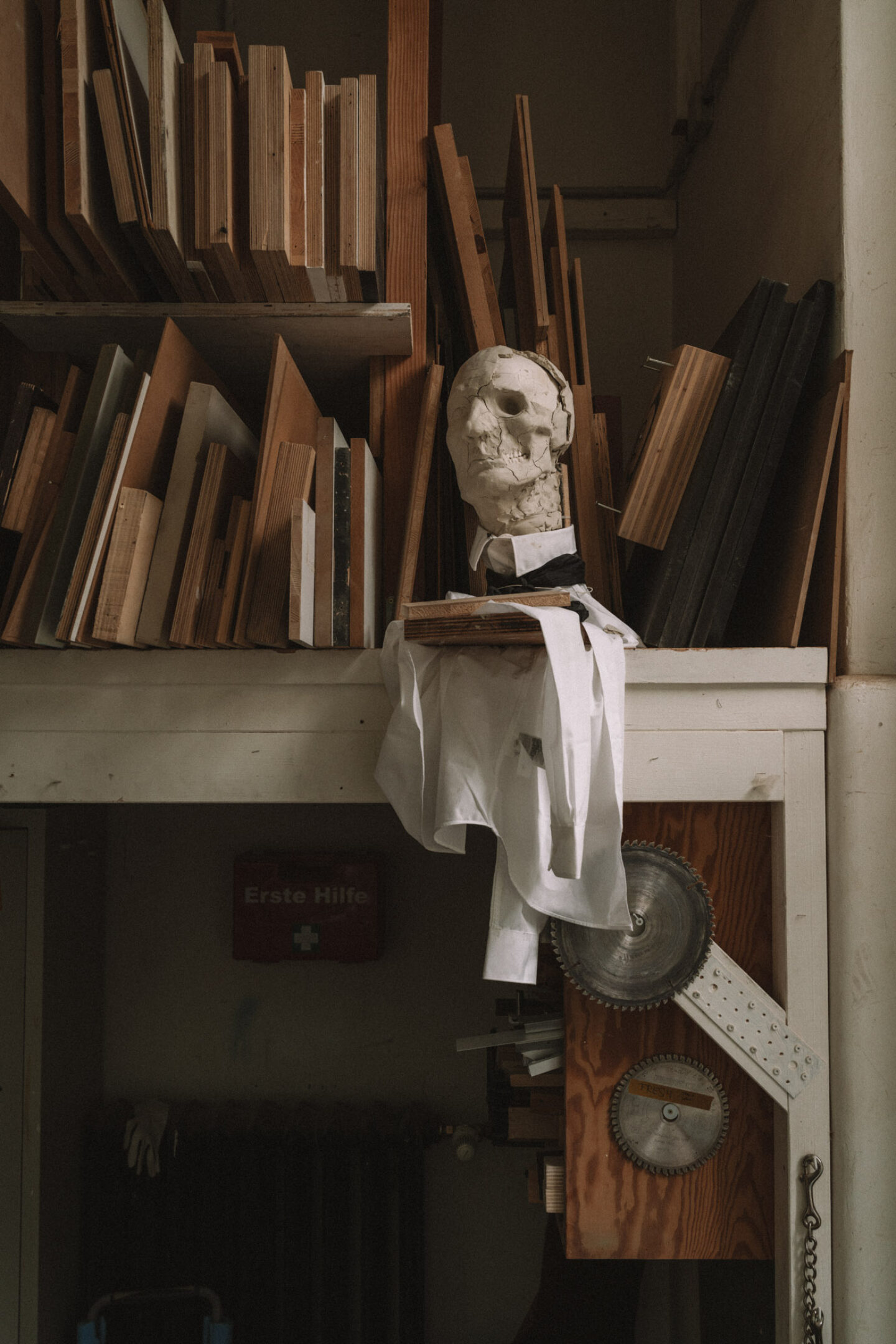
It is common for Elmgreen & Dragset to arrange their works in ever-changing combinations, weaving them into new narratives and allowing unexpected dialogues to emerge. Spanning over 1000 square meters, their atelier offers plenty of room to test novel compositions and various constellations. As we walk through the space, we ask ourselves how the sculptures currently set up in the studio could be connected. Is the vulture taking over the job of the lifeguard? Is the rescue hoop that hangs from the ceiling coming down to help us, or is it on its way up? And what role does the painter in the middle of the space play in all of that?
"For us, art is a great excuse to bring people together in a bodily way."
As we slowly make ourselves on the way out, we stop in front of the sculpture of two boys wearing VR glasses, seemingly frozen in the moment of exploring a parallel universe. Those works make us wonder if the artists could also imagine translating their scenarios into a virtual environment. “We generally don’t reject the concept, but the technology still has to be further developed,” Elmgreen responds thoughtfully. “Actually, the idea for these VR sculptures came from companies asking us if we were interested in working with virtual reality. We were not entirely convinced, but we thought it seems funny how people look and behave when wearing those glasses,” Dragset adds. “For us, art is a great excuse to bring people together in a bodily way. It is a platform where we can socialize and physically experience each other. That is something that we wouldn’t want to eliminate from our practice. I think we really need that,” Elmgreen concludes.
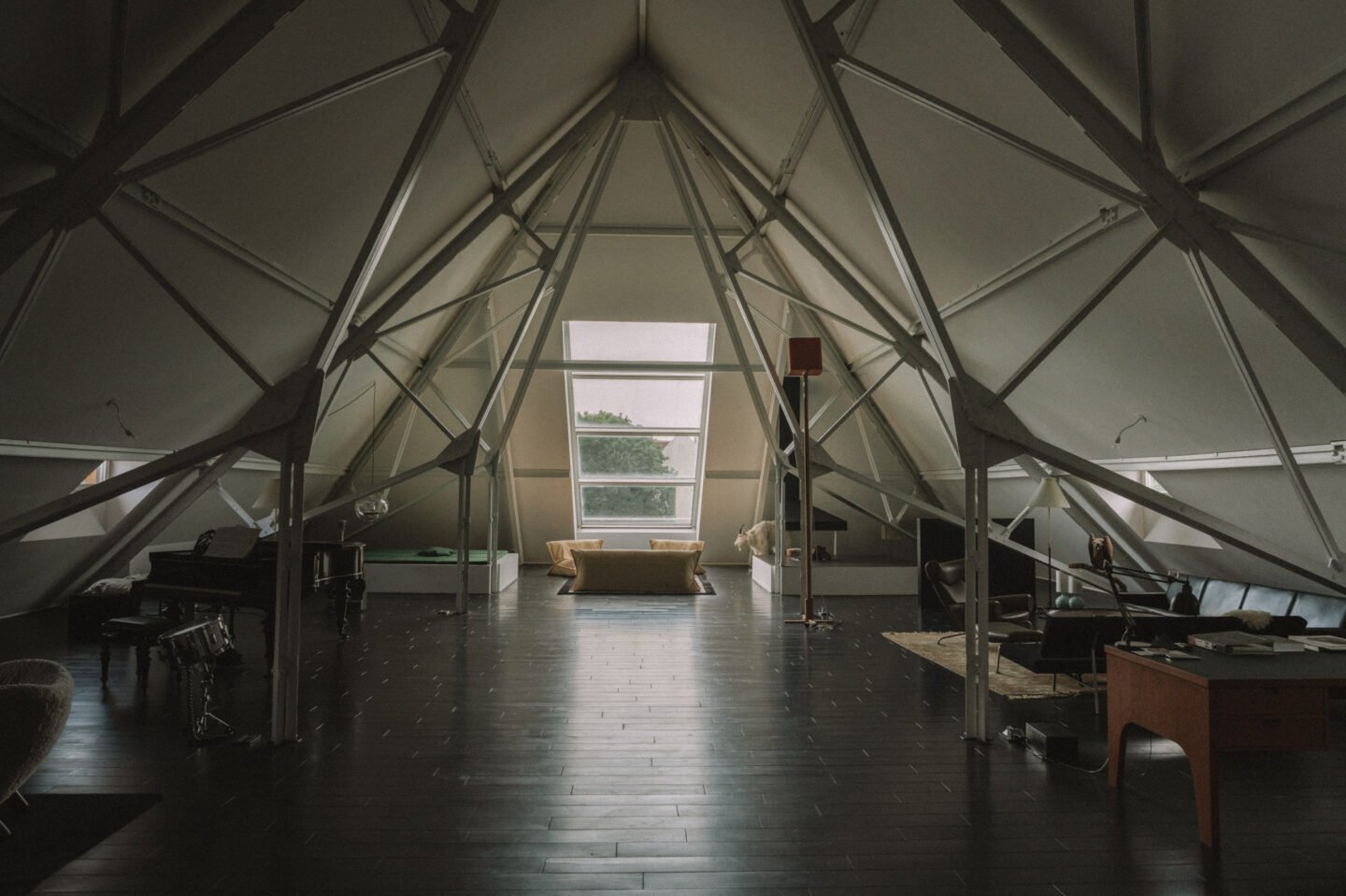
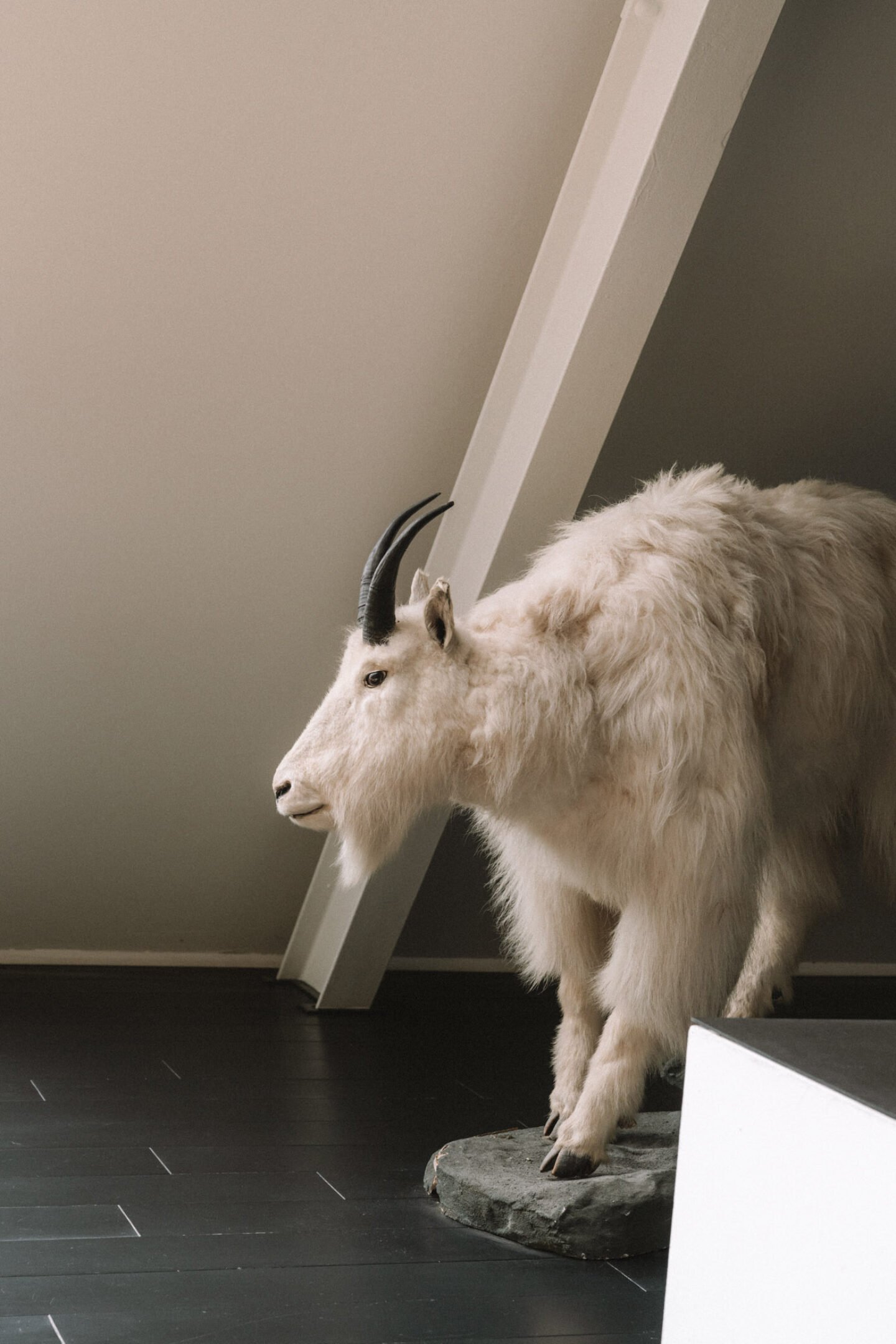
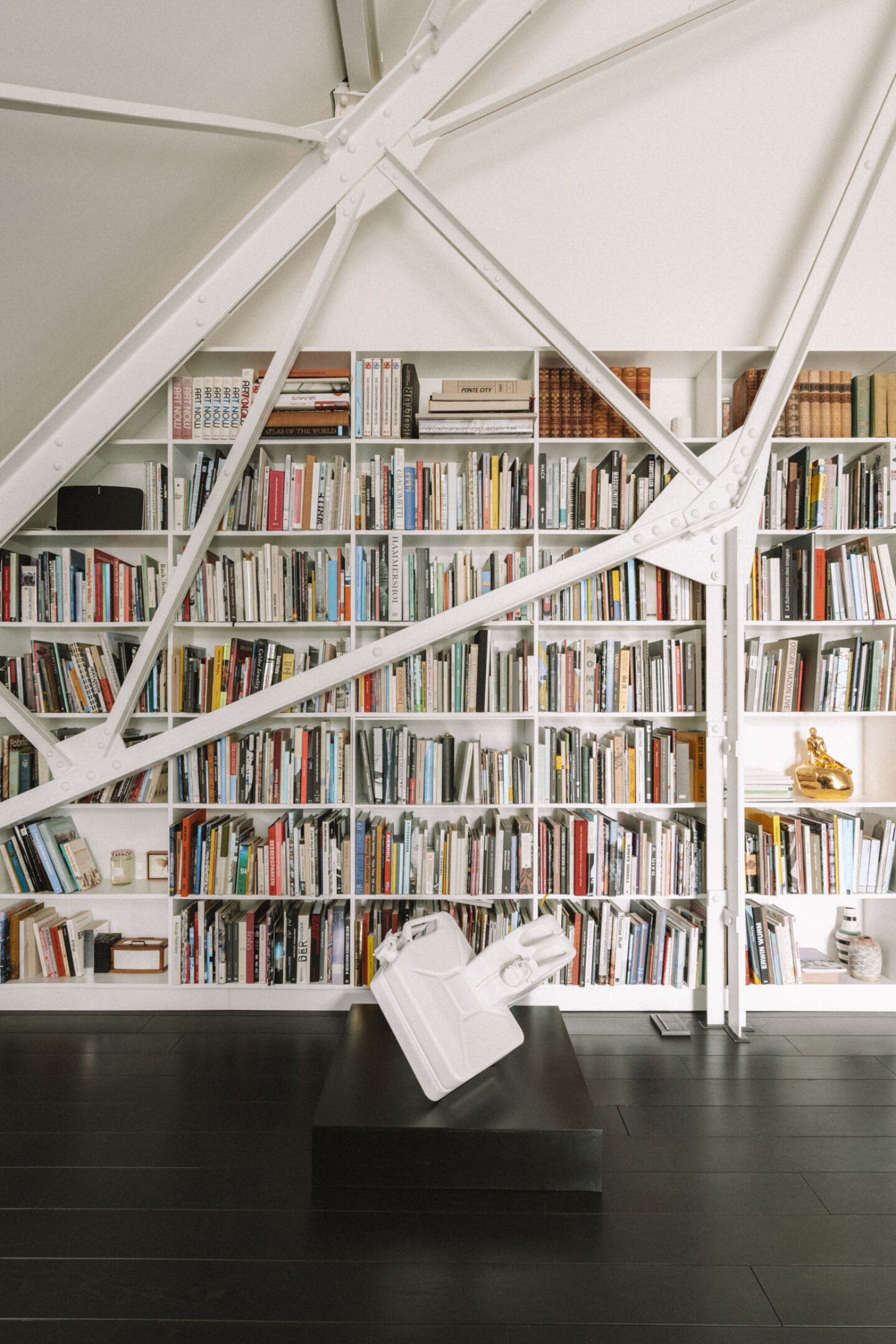
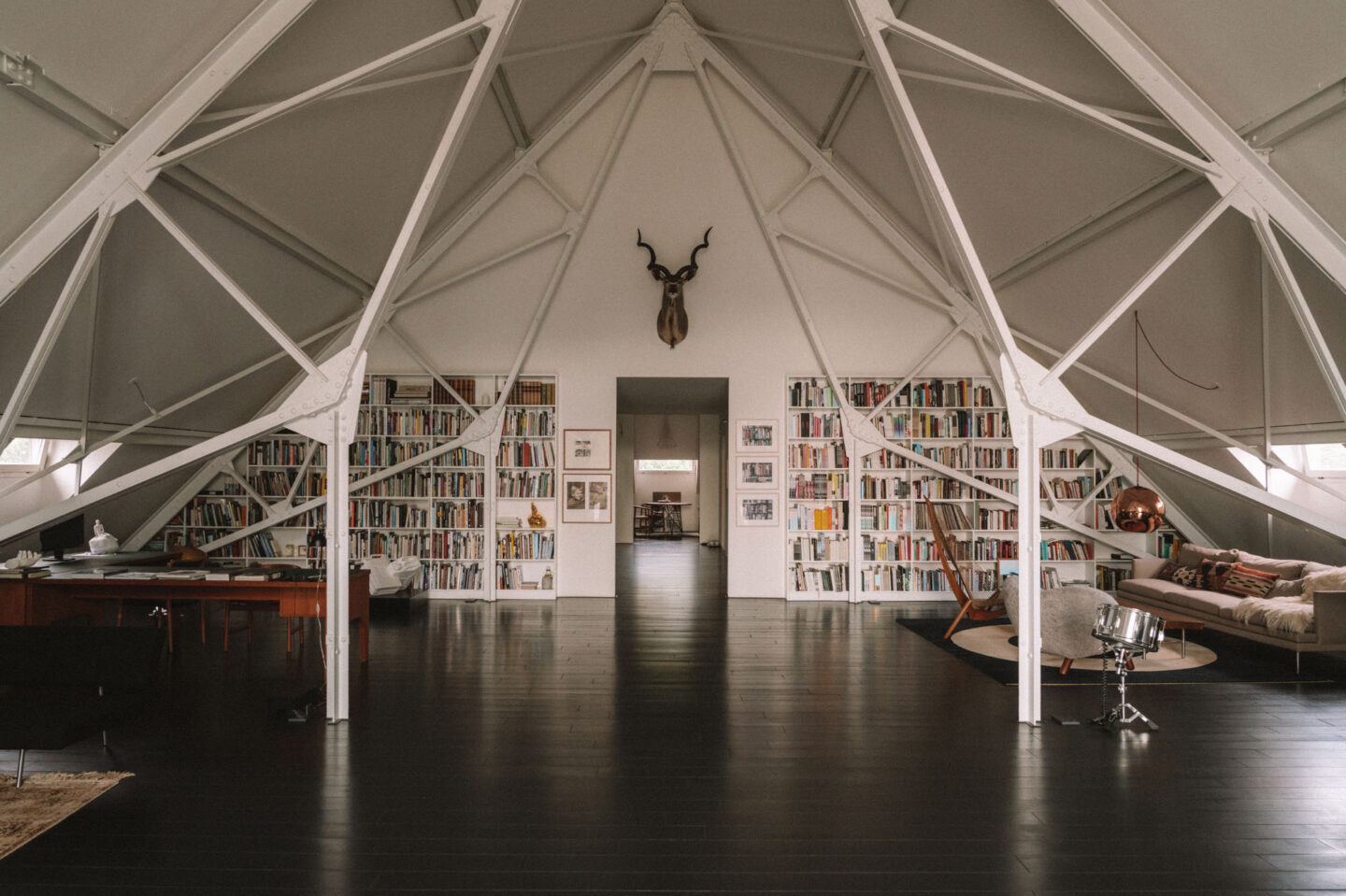
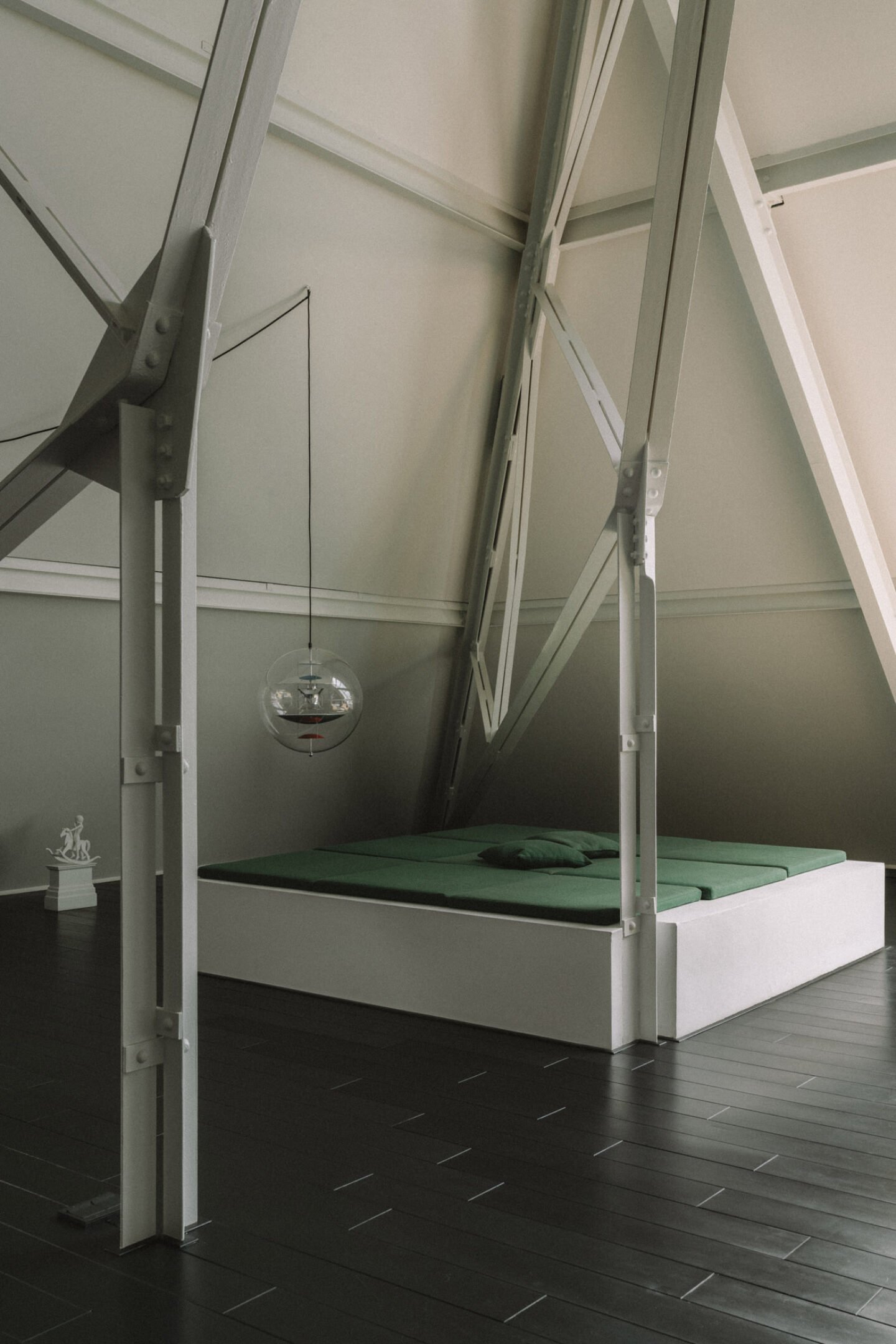
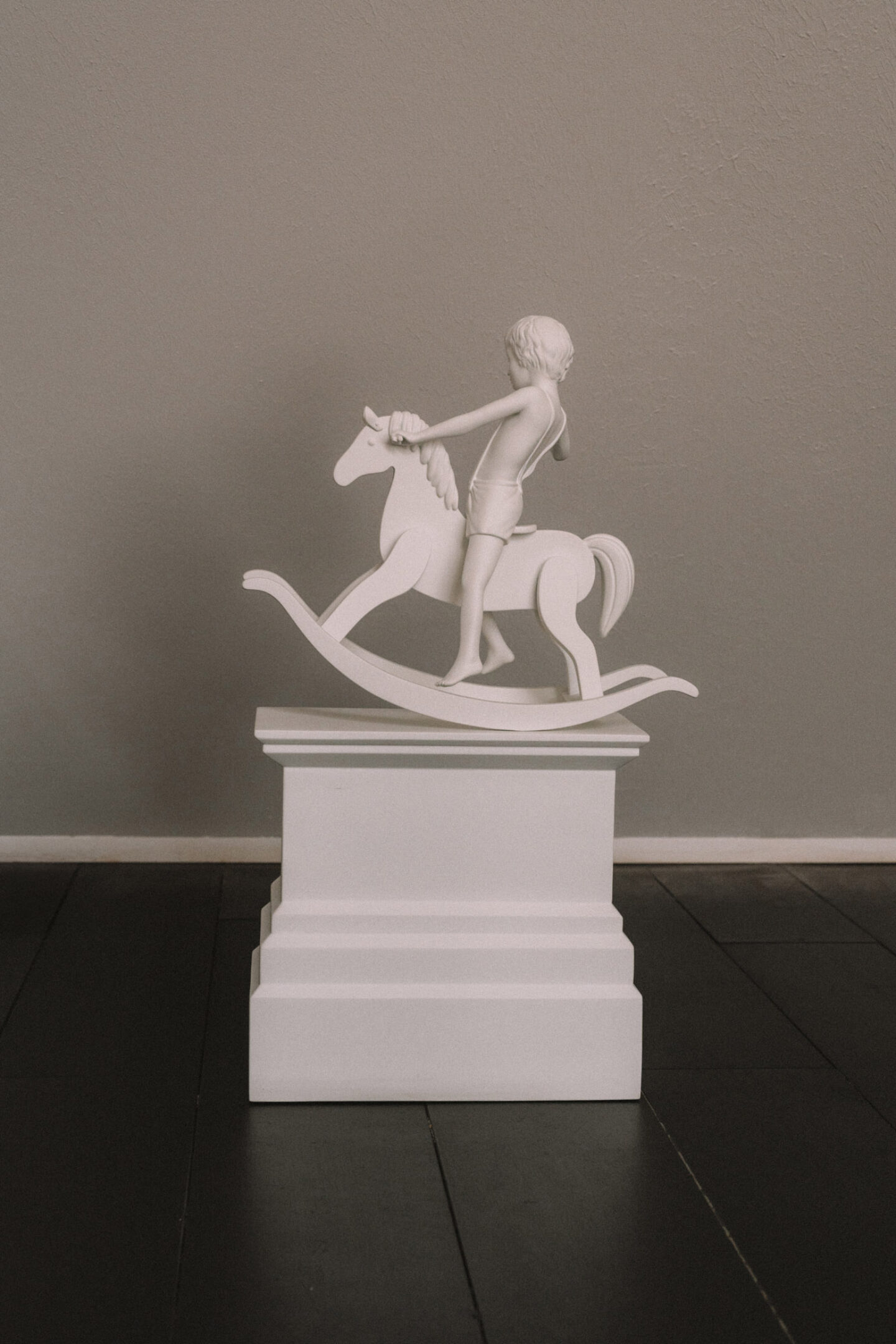
Leaving the studio, our belief is reaffirmed once more that Michael Elmgreen and Ingar Dragset are true virtuosos when creating works that make us feel somewhat uncomfortable. In this discomfort, however, is the invitation to carefully examine our position in certain structures and continuously question the environments that inform our actions.
Images © Clemens Poloczek for Ignant production
